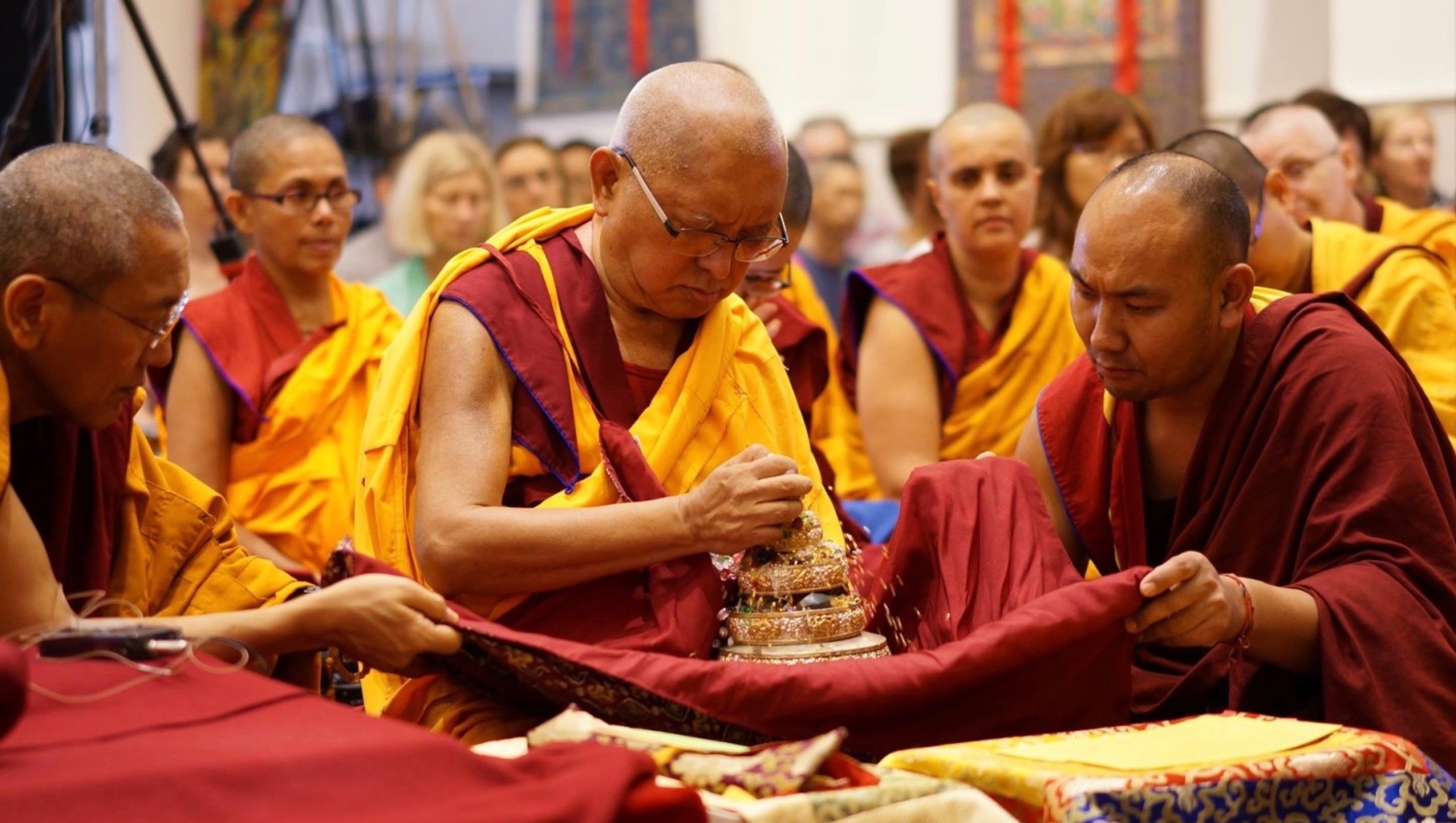An Introduction to the Seven Limbs
Prostrations, Offerings, Confession, Rejoicing, Requesting to Teach, Requesting to Live Long and Dedication
(LC 18-42)
This third multimedia in the Guru Puja is the Heart Practice series brings together teachings by Lama Zopa Rinpoche on the chanting and instructions for the seven limbs in the context of the Guru Puja (LC 18-42). These seven limbs—prostrations, offerings, confession, rejoicing, requesting to teach, requesting to live long, dedication—contain all the practices needed for extensive purification and accumulation of merit before entering the main body of the practice. Edited by Venerable Sarah Thresher with Megan Evart.
THE IMPORTANCE OF THE SEVEN-LIMB PRACTICE
Following the generation of the second merit field (LC 9-14) and the Invocation (LC 15-17), there is a long or short Bath Offering—if you are doing the extensive Guru Puja combined with the Jorchö (Lama Chöpa Jorchö). And after that, comes the practice of the seven limbs—prostrations, offerings, confession, rejoicing, requesting to teach, requesting to live long and dedication—to purify and accumulate merit.
I mentioned before that when Lama Tsongkhapa asked Manjushri about the quickest way to actualize the path to enlightenment, Manjushri replied that three things were needed (1) the purification of obstacles and accumulation of extensive merit, (2) one-pointed requests to the gurus with a devotional mind in order to receive their blessings, and (3) meditation on the stages of the path.
All the practices required for the first of these—the extensive purification of negative karma collected since beginningless rebirths, which is the obstacle to realizations, and the extensive accumulation of merit, which is the cause to achieve realizations—are contained within the seven-limb practice. These seven limbs are like seven parts of a carriage, or car, that are needed for it to function in carrying the person wherever they wish to go. In a similar way, without all seven limbs, there is no way for your practice to carry you to enlightenment.
“Without all seven limbs, there is no way for your practice to carry you to enlightenment.”
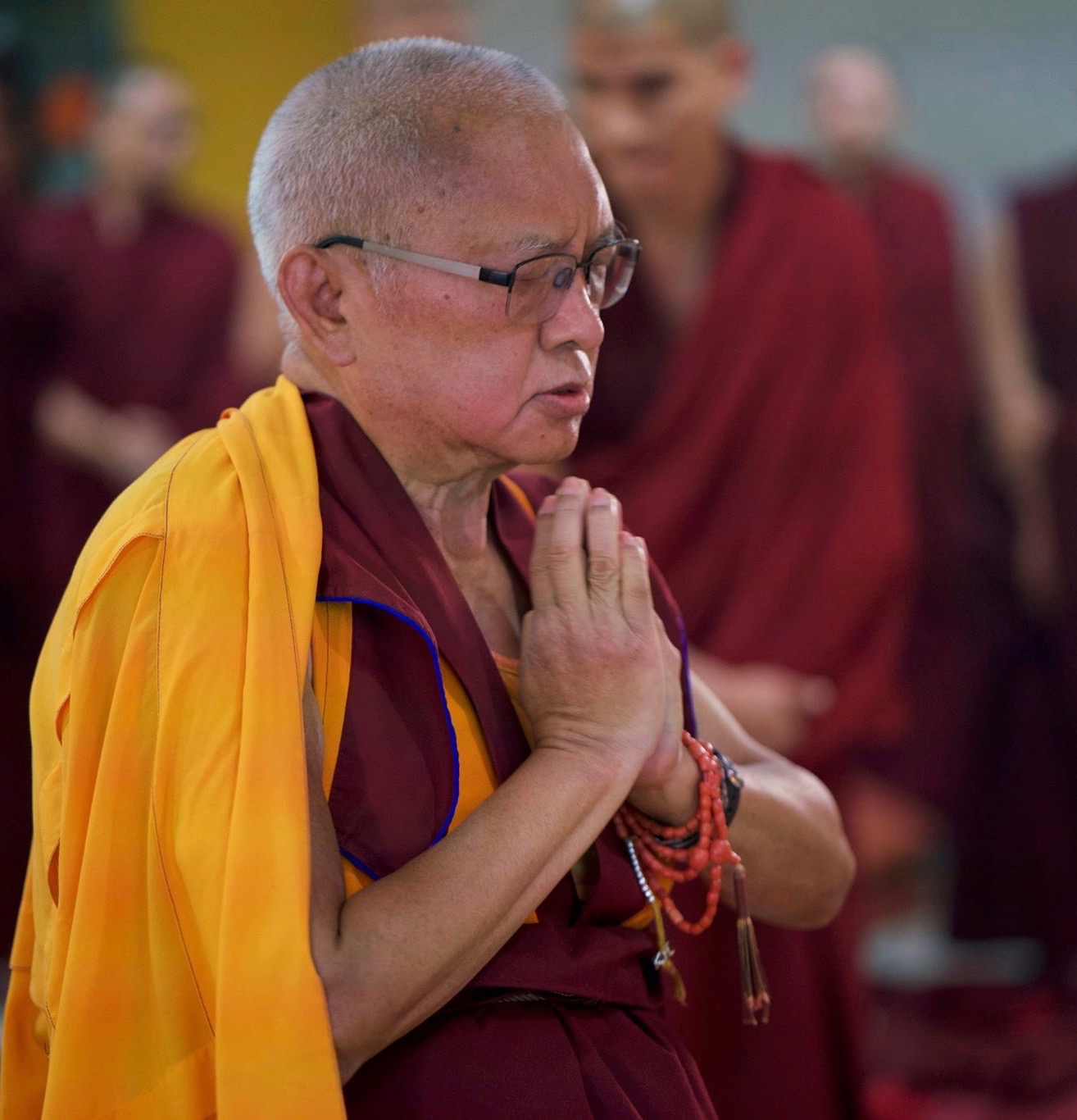
Prostrations
The first of the seven limbs is prostrations. Prostrations are the specific antidote to pride, but also purify all the negative karma accumulated with the body, speech and mind. They are the cause to achieve a buddha’s vajra holy body, speech and mind.
There are mental, verbal and physical prostrations. Mental prostration is having a mind of devotion to the Buddha, Dharma and Sangha due to thinking over their qualities. Verbal prostration is expressing those qualities. Physical prostration is showing respect by putting the palms together and so forth.
THE BENEFITS OF PROSTRATIONS
Two sets of benefits are received by simply putting the palms together in respect to the Guru, Buddha, Dharma, Sangha and their representations.
- A perfect body.
- Perfect companions and entourage.
- Pure morality.
- Devotion.
- Sublime courage.
- Rebirth as a deva or human.
- The arya path.
- Full enlightenment.
And
- Birth in a king’s family.
- Extensive form—a perfect body.
- Extensive entourage.
- Extensive offerings.
- Extensive service and extensive wealth.
- Extensive listening to the Dharma.
- Extensive devotion.
- Extensive remembrance—a very good memory and a clear mind.
- Extensive wisdom.
- Extensive realizations up to enlightenment.
Each time you simply put your palms together in respect and prostrate to the merit field, you create the cause for enlightenment and, by the way, the ultimate happiness of liberation from samsara, future lives’ happiness and the happiness of this life. (See the sidebar for benefits).
Lama Tsongkhapa’s advice to create the most extensive merit when prostrating was to visualize numberless bodies in addition to your own, as huge as possible, covering the whole earth while prostrating from all four directions to the merit field. It is said in the teachings that even visualizing one more body prostrating alongside your own collects the same amount of merit. Therefore visualizing numberless additional bodies creates numberless additional causes of enlightenment with each prostration.
Also, it is mentioned in the Lankavatara Sutra, that each atom (down to the earth’s core) covered by your body while prostrating to the Buddha, or the Three Rare Sublime Ones, creates the cause to be born a wheel-turning king for a thousand lifetimes. Therefore visualizing your own and numberless other bodies as large as possible, like huge mountain ranges, covering every atom of the earth creates an unimaginable amount of merit.
“Each time you simply put your palms together and prostrate to the merit field, you create the cause for enlightenment and, by the way, the ultimate happiness of liberation from samsara, future lives’ happiness and the happiness of this life.”
Offerings
The second limb is offerings. Offerings are the particular antidote to attachment and miserliness, and the cause of wealth and success. As a result of making offerings to the merit field, and practicing charity to sentient beings, your own wishes will succeed and you will have wealth and resources not only in this life, but from life to life up to enlightenment. And when you achieve enlightenment, you will receive infinite offerings and experience the transcendental wisdom of non-dual bliss and emptiness.
Even if you go to university, study economics and graduate with a degree, it doesn’t mean you will be able to find a job. And even if you start a business there’s no guarantee you will be successful—you may face constant problems and difficulties instead. It seems like you ought to be successful because of everything you’ve learned at university, but when you actually start working, there are many obstacles, nothing you plan works out and you fail over and over again. There are many examples of this in the world. It is due to a lack of merit.
Most people in the world don’t know how to create the cause of success. They harm and cheat others, and create non-virtue to do business. Even if they experience some temporary success, later they will have to suffer for many lifetimes in the lower realms and as human beings with many problems. Most people don’t know about Dharma and they don’t understand karma. They don’t understand that happiness has to come from one’s own mind, not from outside. And suffering has to be stopped from within one’s own mind, not from outside. Not knowing this, they are stuck and their lives are full of problems.
“Most people don’t understand that happiness has to come from one’s own mind, not from outside. And suffering has to be stopped from within one’s own mind, not from outside. Not knowing this, they are stuck and their lives are full of problems.”
That’s why it’s very important to put effort into making offerings, not just one time but all the time. This is so important for your own success and especially to be able to benefit sentient beings. You must take the opportunity all the time, whenever you see a way of practicing Dharma by making charity to sentient beings and offerings to the merit field. Our lives are always full of opportunities to practice Dharma, but if we fail to take them we’re left with nothing. You have to bring Dharma into the activities of your daily life.
Confession of Nonvirtue
The third limb is the confession of nonvirtue. Confession is the antidote to the three poisonous minds of ignorance, anger and attachment and to all negative karma. It is the cause to achieve the result of dharmakaya.
Rejoicing in Virtue
The fourth limb is rejoicing in virtue. Rejoicing is the particular remedy to the delusion of jealousy and creates the cause for success. As a result of rejoicing, you will achieve the holy body of a Buddha, which is so incredibly beautiful that no matter how many times one looks at it the mind is never satiated.
Requesting to Turn the Wheel of Dharma
The fifth limb is requesting teachings. This is the particular antidote to the very heavy negative karma of abandoning the holy Dharma. It is the cause to achieve the perfect holy speech of a Buddha and to be able to give teachings to many sentient beings in the future.
Giving up any teaching taught by the Buddha because you don’t understand it is avoiding the holy Dharma. Being careless and giving up the Dharma as an object of devotion from your heart creates such heavy negative karma that it is equivalent to destroying all the Buddhist holy objects in this world—all the statues, stupas, scriptures, temples and so on. Many Westerners have no idea about abandoning the holy Dharma. They think, “Oh, this teaching is not for me,” and give it up. Even if Tibetans don’t understand the teachings, they will still usually listen with faith. It is advised to think “I don’t understand this now, but I hope to understand it in the future.” You have to plan like this otherwise there is the great danger of abandoning the holy Dharma.
Requesting the Gurus to Remain for a Long Time
The sixth limb is requesting the gurus to remain for a long time in nirmanakaya aspect. This is the particular antidote to the heaviest negative karma of disturbing the guru’s holy mind, belittling and giving up the guru and so on. It is a cause for your own long life and to achieve the immortal vajra holy body.
After you make connection with a guru, if you then treat him or her like your boyfriend or girlfriend and give up the relationship when they do something you don’t like—something that is against your self-cherishing thought—you create the heaviest negative karma. Following the guru with this kind of mind only brings huge problems later on, and it can cause your own life to be shortened. Offering long life pujas and requesting the guru to have a stable life are antidotes to purify this negative karma and cause the disciples to have a long life. This is how it works scientifically. Requesting the guru to live long is a cause for your own long life not only this life but for hundreds and thousands of lives, due to the fact that karma increases. It is also a cause for your wishes to succeed; and very important purification.
Dedication of Merit
The final limb is the dedication of merit. Dedication is the particular antidote to heresy and anger, which destroy our merits; and the cause to achieve the two buddha bodies (kaya), the dharmakaya and rupakaya.
WHAT ARE THE SEVEN LIMBS?
The seven-limb prayer is one of the six preparatory practices to be done prior to any meditation practice. It became part of the lamrim tradition as taught by Lama Atisha, who received it from Lama Serlingpa. The six preparatory practices are: (1) cleaning the place and setting up representations of the enlightened body, speech, and mind; (2) obtaining offerings honestly and arranging them beautifully; (3) adopting the seven-featured position of Vairochana and taking refuge, developing bodhichitta, and so on; (4) invoking the merit field; (5) offering the seven-limb prayer and a universal mandala; and (6) making requests for blessings.
For more extensive teachings on the seven limbs participate in this free FPMT online module of Lama Zopa Rinpoche’s practice instructions Living in the Path: The Seven-Limb Prayer.

The First Limb: Prostrations
(LC 18-22)
PROSTRATIONS
The Kopan umdze leads these prostration verses quickly and then chants the next section on making offerings. But I think it is very important to chant these verses slowly and use them for meditation. I mentioned earlier that one reason for chanting is to allow time for meditation as well as to inspire the mind. These verses are expressing what the guru is and the gurus’ kindness. Since correctly following the guru in thought and action is the very essence of the practice, chanting the verses slowly gives time to meditate on their meaning and transform the mind into devotion. If the chanting is normally done quickly it is difficult to meditate.
“It is very important to chant the prostration verses slowly and use them for meditation.”
How to Meditate on the Prostration Verses
(LC 18-22)
In these prostration verses, first the qualities of the guru are described and then the kindness. It is very effective to meditate on each verse in relation to the kindness of each of our gurus.
Prostrating to the Guru as the Sambogakaya
LC 18
GANG GI THUG JE DE WA CHHEN PÖI YING
Your compassion grants even the sphere of great bliss,
KU SUM GO PHANG CHHOG KYANG KÄ CHIG LA
The supreme state of the three kayas, in an instant.
TSÖL DZÄ LA MA RIN CHHEN TA BÜI KU
Guru with a jewel-like body,
DOR JE CHÄN ZHAB PÄ MOR CHHAG TSHÄL LO
Vajra holder, I prostrate at your lotus feet.
Our gurus give us all the teachings of the whole path to enlightenment, both lamrim and tantra, as well as initiations. They teach us all the most secret, profound means of achieving enlightenment in this brief lifetime. By practicing these, we can become enlightened in this life. This is like achieving enlightenment in an instant, compared to one day in even the first category of the hot hells, Being Alive Again and Again, which is equivalent to nine million human years. Compared to the duration of beginningless time and one day of a hell-being’s life, our gurus grant us enlightenment in an instant. Our teachers are extremely kind in revealing to us the teachings of the entire path, which can grant us enlightenment—the sphere of great bliss, the supreme state of the three kayas—in a moment.
Prostrating to the Guru as the Nirmanakaya
LC19
RAB JAM GYÄL WA KÜN GYI YE SHE NI
The transcendental wisdom of all the infinite conquerors,
GANG DÜL CHIR YANG CHHAR WÄI THAB KHÄ CHHOG
Supreme skillful means appearing in any way that subdues,
NGUR MIG DZIN PÄI GAR GYI NAM RÖL WA
Sporting in the guise of a saffron-robed monk;
KYAB GÖN DAM PÄI ZHAB LA CHHAG TSHÄL LO
Holy refuge savior, I prostrate at your feet.
The second prostration verse is talking about the kindness of the guru in manifesting in whatever form suits our minds. Even though there are numberless aspects of buddhas, since we can’t see buddhas in the form of buddhas, we can’t receive teachings from them in that form. Therefore, the guru is extremely kind in manifesting in this present form, which accords with our level of mind, and guiding us by giving the various teachings.
“The guru is extremely kind in manifesting in this present form, which accords with our level of mind, and guiding us by giving the various teachings.”
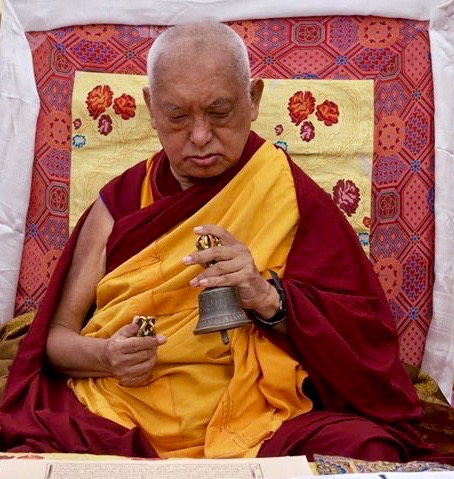
THE MUDRA FOR THE PROSTRATION VERSES (LC 18-22)
There is a mudra for the prostrations
- First line, show the vajra;
- Second line, ring the bell;
- Third line, perform the lotus-turning mudra:
- Last line, put your palms together in the mudras of prostration.
This mudra has great meaning. Showing the vajra means your guru is guiding you to enlightenment by manifesting from the dharmakaya; and in the form of the sambhogakaya (ringing the bell); and in the nirmanakaya (performing the lotus mudra). So remember this meaning at the beginning. I added that you should also think that in the future when you become enlightened, you will guide sentient beings in the same way (putting the palms together).
The meaning of the mudra is usually kept secret and not revealed to those who haven’t received a highest tantra initiation. Maybe now I have created the cause to be born in the lower realms so I have to confess.
Prostrating to the Guru as the Dharmakaya
LC 20
NYE KÜN BAG CHHAG CHÄ PA DRUNG CHHUNG ZHING
You eliminated all faults and their imprints from the root,
PAG ME YÖN TÄN RIN CHHEN TSHOG KYI TER
And are a treasury of infinite precious qualities.
PHÄN DE MA LÜ JUNG WÄI GO CHIG PU
Sole source of benefit and bliss without exception,
JE TSÜN LA MÄI ZHAB LA CHHAG TSHÄL LO
Perfect, pure Guru, I prostrate at your feet.
When we recite the line about eliminating all faults and even their imprints, it is good to think about all our delusions, every single one of them, and to remember all the negative actions we have done out of them. We should then remember in detail all the suffering of the six realms that has resulted from these negative karmas.

For example, we should remember all the various problems of human beings that result from negative karma—not only old age, sickness and death, but famine, epidemic disease, relationship problems and the many other problems. Who is it that totally eliminates all our problems and their cause, negative karma and delusions? Our gurus.
We should think especially of eliminating the negative actions and delusions that result in the unimaginable suffering of the eight hot and eight cold hells, as well as the branch hells. No matter what pain we experience from heat and cold in the human realm, it is pleasurable compared to the sufferings in the hells. Who ends all our suffering in the hot and cold hells and its cause? Our gurus.
We should also think of the hungry ghosts, whose sufferings we couldn’t bear. We couldn’t survive without food or even a drop of water for seven days, yet hungry ghosts experience such great suffering for hundreds of years. Who completely ends the immense suffering we have to experience as a hungry ghost? Our gurus.
We should then think of all the animals, who are extremely foolish, suffer from heat and cold and eat one another. A human being couldn’t bear the suffering that animals experience; there is no way a human could bear even the hardship of not being able to explain her needs. Through giving us teachings, our gurus are the only ones who can completely end for us all the karma and delusions that bring this animal suffering.
“All the good things that we have now and will receive in the future, up to enlightenment, come through the kindness of the guru.”
When we recite sole source of benefit and bliss without exception, we should remember that every single merit we create is the action of the guru; it comes through the guru’s kindness. Who gives us every single happiness of past, present and future and every single quality of a buddha’s holy body, speech and mind? Who gives us all the merit that we receive? Our gurus. All the good things that we have now and will receive in the future, up to enlightenment, come through the kindness of the guru. Our gurus are treasures of inconceivable merit, source of all happiness and benefit, and the panacea of peace. This is why we prostrate at the holy feet of our gurus.
Prostrating to the Guru as the Manifestation of the Three Rare Sublime Ones
LC 21
LHAR CHÄ TÖN PA SANG GYÄ KÜN GYI NGÖ
Teacher of gods and all, embodiment of all buddhas,
GYÄ THRI ZHI TONG DAM CHHÖ JUNG WÄI NÄ
Source of the 84,000 holy Dharmas,
PHAG TSHOG KÜN GYI Ü NA LHANG NGE WA
You stand out among the whole host of aryas.
DRIN CHÄN LA MA NAM LA CHHAG TSHÄL LO
Kind Guru, I prostrate to you.
With this verse we should think that each of our gurus is all the buddhas; each guru is Manjushri, Tara, Vajrapani and all the other buddhas. And because each guru is all the buddhas, each guru is the source of all the Dharma, of all the 84,000 teachings. Without each of our gurus, there is no Buddha, there is no Dharma, there is no Sangha.
Prostrating to the Guru as the Manifestation of All the Buddhas and Bodhisattvas
LC 22
DÜ SUM CHHOG CHUR ZHUG PÄI LA MA DANG
To the gurus dwelling in the three times and ten directions,
RIN CHHEN CHHOG SUM CHHAG Ö THAM CHÄ LA
The Three Precious Sublime Ones, and all worthy of homage:
DÄ CHING MÖ PÄ TÖ YANG GYA TSHOR CHÄ
With faith, conviction, and an ocean of lyric praise,
ZHING DÜL NYAM PÄI LÜ TRÜL CHHAG TSHÄL LO
I prostrate, manifesting as many bodies as atoms in the universes.
Here, the objects of prostration include not only living beings, but also statues, scriptures, stupas and all other holy objects. Here we should remember that without the guru there is no Triple Gem with which we can accumulate merit. Without the guru, there is not even one statue to which we can make offering and with which we can accumulate merit; there is not even one scripture we can study to leave an imprint of the path; there is not even one stupa with which we can purify and accumulate merit. Any merit we accumulate with any holy object comes solely by the kindness of each of our gurus.

“Without the guru, there is not even one holy object with which we can purify and accumulate merit.”
In relation to holy objects, we can think, “The guru manifested in these forms to enable me to purify my mind and collect merit.” It is such an easy way to collect merit, as it doesn’t even depend on our having a virtuous motivation. Even if our motivation is not Dharma, simply seeing, circumambulating, or prostrating or making offering to holy objects immediately becomes the cause of enlightenment, liberation from samsara and the happiness of hundreds of thousands of future lives. And, of course, it also affects this life. Because we purify so much negative karma, it reduces the problems of this life.
The existence of holy objects makes it so easy for us to purify our heavy negative karmas and collect extensive merit, enabling us to have realizations of the path to enlightenment. We should also understand that all these holy objects exist due to the kindness of the guru. By understanding that the meaning of guru is the dharmakaya, the holy mind of all the buddhas, we see that these holy objects happened through the kindness of the guru, or through the guru manifesting in them, to liberate us from samsara and bring us to enlightenment.
As mentioned in these verses, the guru has done the work of giving us all the teachings of the complete path to enlightenment, from beginning to end. If we had practiced these teachings, if we had followed the guru instead of our selfish mind, we would already have become enlightened, or at least had some attainment of the graduated path to enlightenment.
“If we had followed the guru instead of our selfish mind, we would already have become enlightened.”
As mentioned here and in Six-Session Guru Yoga, it is definite that our gurus give us enlightenment in an instant; the fault is only that from our side we haven’t followed them. Our gurus have been unbelievably kind in giving us vows, thus helping to protect us from negative karmas and enabling us to accumulate merit. In this way, each of our gurus is leading us from our present state to the state of enlightenment. Each of our gurus is extremely kind.
This is how to meditate on the kindness of the guru in connection with the prostration verses from Guru Puja. It is very effective to read or chant these verses slowly, meditating on their meaning.
The Elaborate Chanting for the Prostrations
(LC 18-22)
I’ll just chant one stanza for the Prostrations (LC 18-22) because many of you already know how to do this.
LC 18
GANG GI THUG JE DE WA CHHEN PÖI YING
Your compassion grants even the sphere of great bliss,
KU SUM GO PHANG CHHOG KYANG KÄ CHIG LA
The supreme state of the three kayas, in an instant.
TSÖL DZÄ LA MA RIN CHHEN TA BÜI KU
Guru with a jewel-like body,
DOR JE CHÄN ZHAB PÄI MOR CHHAG TSHÄL LO
Vajra holder, I prostrate at your lotus feet.
The Medium Chanting for the Prostrations
(LC 18-22)
LC 18
GANG GI THUG JE DE WA CHHEN PÖI YING
Your compassion grants even the sphere of great bliss,
KU SUM GO PHANG CHHOG KYANG KÄ CHIG LA
The supreme state of the three kayas, in an instant.
TSÖL DZÄ LA MA RIN CHHEN TA BÜI KU
Guru with a jewel-like body,
DOR JE CHÄN ZHAB PÄI MOR CHHAG TSHÄL LO
Vajra holder, I prostrate at your lotus feet.
The Short Chanting for the Prostrations
(LC 18-22)
LC 18
GANG GI THUG JE DE WA CHHEN PÖI YING
Your compassion grants even the sphere of great bliss,
KU SUM GO PHANG CHHOG KYANG KÄ CHIG LA
The supreme state of the three kayas, in an instant.
TSÖL DZÄ LA MA RIN CHHEN TA BÜI KU
Guru with a jewel-like body,
DOR JE CHÄN ZHAB PÄI MOR CHHAG TSHÄL LO
Vajra holder, I prostrate at your lotus feet.
If you chant it this fast it means means you’re in a hurry. Maybe you’re hungry or you need to rush off somewhere—perhaps you need to go to bed quickly!

The Second Limb: Offerings
(LC 23-37)
INTRODUCTION
There are four types of offerings in highest yoga tantra—outer, inner, secret and absolute. First are the outer offerings (LC 23-31).
OUTER OFFERINGS
(LC 23-31)
Increasing the Offerings
The Offering Cloud Mantra
If you haven’t already recited the Offering Cloud Mantra in the preliminary prayers before starting the Guru Puja, you can recite it here
OM NAMO BHAGAVATE VAJRA SARVA PRAMARDANE TATHAGATAYA / ARHATE SAMYAKSAM BUDDHAYA / TADYATHA OM VAJRE VAJRE / MAHA VAJRE / MAHA TEJA VAJRE / MAHA VIDYA VAJRE / MAHA BODHICHITTA VAJRE / MAHA BODHI MANDO PASAM KRAMANA VAJRE / SARVA KARMA AVARANA VISHO DHANA VAJRE SVAHA (3x)
THE BENEFITS OF RECITING THE OFFERING CLOUD MANTRA
The mantra has two functions, blessing and increasing. There are ten benefits explained in the Buddha’s teachings (kangyur)
- The minute you remember this mantra, you receive the benefit of making offering to all the buddhas abiding in the ten directions, equaling the number of the atoms of the sand grains of the Pacific Ocean.
- You receive the benefit of prostrating to the holy feet of all those buddhas.
- You receive the benefit of making offering of flowers, incense, garlands of flowers, ornaments, ointments, Dharma robes, umbrellas, banners, flags, animals, monastic sitting cloths, divine dress, food, various ornaments and so forth, to all the buddhas abiding in the ten directions.
- You are freed from all negative karmas and obscurations.
- You gain all the merits.
- You will see all the buddhas and bodhisattvas.
- They will support you—“give you breath”—which means freeing you from the suffering of the lower realms and so on.
- You will be protected by devas, nagas, yakshas, gandharvas, asuras, garudas, kinnaras, mahoragas, Vajrapani the Owner of the Secrecy and the four guardians. They will always follow you perfectly, protect and guide you, and hide you if others try to inflict harm.
- When you die, your consciousness will transfer from this world to Amitabha Buddha’s pure land, the Blissful Realm.
- You receive all these qualities and benefits just by remembering this mantra once, without any need to do retreat.
Many people think this mantra is simply to bless the offerings but it does much more than that, it also multiplies whatever you have offered. When you chant this mantra, if you have offered one stick of incense to the numberless buddhas and bodhisattvas they receive numberless sticks of incense; if you offer one light to the numberless buddhas and bodhisattvas, they receive numberless light offerings. It is most amazing. It means that each of the numberless buddhas and bodhisattvas receives numberless offerings, like the clouds that cover the sky when you go by plane, kind of limitless. And since each offering becomes numberless, you create numberless causes for enlightenment. For example, one light offering becomes numberless light offerings to numberless buddhas and bodhisattvas, and the same with one water bowl offering and so on. Therefore you collect the most amazing amount of merit and numberless causes of enlightenment. (See sidebar for the benefits.)
It would be better to recite the Offering Cloud Mantra with the general preliminaries before starting the Guru Puja rather than at the offering section, because it is said to come from the lower, or kriya, tantra whereas the Guru Puja is a highest tantra practice. In the Jorchö, the Offering Cloud Mantra comes at the beginning. There are Jorchö practices that are only sutra and also Jorchö practices combined with highest tantra. The Jorchö practice that we do is highest tantra and the meditation on generating the merit field is the same as in the Guru Puja (LC 9-14). I have also seen a Maitreya Buddha Guru Puja, composed by a great lama whose name I don’t remember now, where the Offering Cloud Mantra comes at the beginning after Purifying the Place. In both cases, these practices are highest tantra and the Offering Cloud mantra is at the beginning. It is more comfortable to recite the mantra in the preliminaries before starting the puja. But each time you make the offerings, you should visualize them as limitless clouds of offerings filling the whole earth and sky.
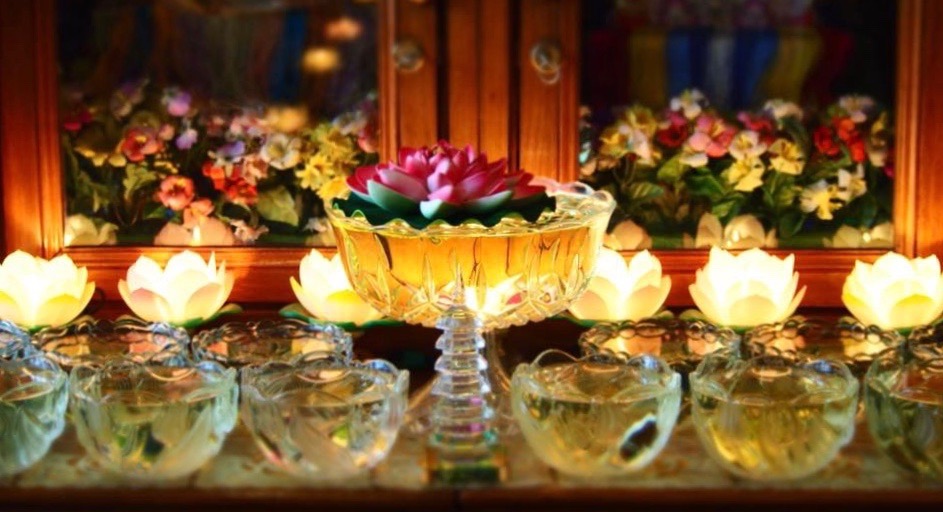
“When you chant this Offering Cloud Mantra one light offering becomes numberless light offerings to numberless buddhas and bodhisattvas—therefore you collect the most amazing merit and numberless causes of enlightenment.”
Highest Tantra Mantras to Increase the Offerings
There is a mantra used in highest tantra to increase the offerings
OM SARVA VID PURA PURA SURA SURA / AVARTAYA AVARTAYAHO / NAMAH SAMANTA BUDDHANAM / ABHISMARAYE SPHARANA IMAM GAGANA KHAM DHARMADHATU AKASHA SAMANTAMAM SARVA TATHAGATA / APARI SHUDDHALE MANDALE MAMA PRANITE PUNYAI JNANA BALENA / SARVA TATHAGATA BALENTA BANDHA SVASTHANA BALENCHAYA SVAHA
There is also the practice of the Six Mantras, Six Concentrations, Six Mudras, which many people do just before blessing the tsog into the meaning of tsog—the transcendental wisdom of great bliss nondual with emptiness. This could maybe also be used to bless the offerings into skies of offerings fulfilling the guests’ wishes before offering them.
What to Think When Blessing the Offerings
When you recite the Offering Cloud Mantra and make the offerings, you shouldn’t only think of the offerings wherever you are. The older students will know that I always announce to people that they should include all the offerings at the FPMT centers as well, whether big or small. So start with the offerings in your own room, house or center. Then think of all the offerings in all the FPMT centers around the world. Then think of the offerings in my houses: there are many offerings set up by the sangha every day in different rooms at my house in Aptos, in Washington, upstairs at Kopan and so on.
You can also think the whole sky is filled with offerings: the eight types of outer offerings—water, flowers, incense, lights and so on—the eight auspicious signs, and the seven precious objects of a universal monarch. You can even offer the sun and the moon that arise through the collective karma of the beings in this world, all the flowers and so on. Include everything that is owned and unowned. When we offer a mandala in the Six-Session Guru Yoga we recite
DAG ZHÄN LÜ NGAG YI SUM LONG CHÖ DÜ SUM GE TSHOG CHÄ
The body, speech, and mind of myself and others,
Our wealth as well as our virtues amassed in the past, present and future,
RIN CHHEN MANDAL ZANG PO KÜN ZANG CHÖ PAI TSHOG CHÄ PA
An excellent jeweled mandala together with a mass of Samantabhadra’s offerings:
LO YI LANG NÄ LA MA YI DAM KÖN CHHOG SUM LA BÜL
I envision these all and present them to you,
O my Guru, my yidam, and the Three Rare Sublime Ones.
THUG JE WANG GI ZHE NÄ DAG LA JIN GYI LAB TU SÖL
Accepting these in your compassion, bestow on me waves of your blessings.
Here you are offering not only what belongs to you but also what belongs to others. It is similar in the mandala offering in the Vajrayogini sadhana
DAG GI CHHAG DANG MONG SUM KYE WÄI YÜL
The objects of my attachment, anger, and ignorance—
DRA NYEN BAR SUM LÜ DANG LONG CHÖ CHÄ
Friends, enemies, strangers, body, and resources—
PHANG PA ME PAR BÜL GYI LEG ZHE NÄ
Without any sense of loss I offer them. Please accept them well,
DUG SUM RANG SAR DRÖL WAR JIN GYI LOB
And bless me to be spontaneously freed from the three poisons.
You offer the objects of your anger, attachment and ignorance. You offer your friend and also your enemy—you put the object of your anger in the mandala and offer that to your guru. You offer not only offer your own body, speech and mind, but also the body, speech and mind of others, to the merit field whose essence is the guru. I think that if you can remember everything you have offered in the mandala—your own and even others’ body, speech, mind, enjoyments and three-time merits—that will help you as you go about your daily life not to let attachment and anger arise—because you have already offered everything.
Presenting the Offerings
EDITOR’S NOTE Practicing this section requires a highest yoga tantra empowerment.
When it comes to making the offerings to the merit field, if you have arisen as the highest tantra deity, you transform offering goddesses from your heart who carry the offerings and present them to the merit field. You can either transform all the offering goddesses at once, or one by one, and after the offering is made the goddesses absorb back into your heart. Absorbing them back into your heart has a special purpose; it is preparation to actualize the clear light. You can also do as in the Chakrasamvara practice, with the sixteen goddesses carrying the offerings.
First, there is the water offering, with numberless goddesses carrying the drinking water. Then, with the second offering, flowers, numberless goddesses carry the numberless flower offerings; and so on. All the offerings and the beings—everything—are your own mind, the transcendental wisdom of nondual bliss and voidness; everything is great bliss. Who you are offering to is also the absolute guru, the transcendental wisdom of nondual bliss and voidness. What is offered and who experiences the offerings are the same.
During the offerings, while thinking that each merit field receives skies of each type of offering and generates infinite bliss with this, it is most important to remember the inseparability of the guru and the merit field and to always be mindful of the object, the guru, and generate infinite bliss. In that way, you generate the most extensive merit and you generate great bliss in their holy minds, which is the essence of the offerings, the essence of the puja.
Normally, it is advised to look as everything as a dream, as merely labeled. Therefore, this is just one thing—transcendental wisdom of nondual bliss and voidness, great bliss—manifesting in different forms. It just appears as the offering goddesses, the various types of offerings, the merit field and you yourself as the deity. This one thing manifests in various forms and is labeled “this” and “that.” In reality, nothing exists from its own side; everything is empty: subject, offering, action. All objects are empty. The mind merely imputes it, making up the idea, the labels “this” and “that.”
The Elaborate Chanting for the Outer Offerings
(LC 23-31)
Now the chanting for the offerings
LC 23
KYAB GÖN JE TSÜN LA MA KHOR CHÄ LA
Refuge savior, perfect, pure Guru, together with your retinue,
NA TSHOG CHHÖ TRIN GYA TSHO BÜL WA NI
I present you with oceans of clouds various offerings.
LC 24
KÖ LEG RIN CHHEN Ö BAR NÖ YANG LÄ
From spacious, well-arranged vessels, radiant and precious,
DAG JE DÜ TSII CHHU ZHI DÄL GYI BAB
Flow gently forth four streams of purifying nectar water.
The Medium Chanting for the Outer Offerings
(LC 22-31)
LC 23
KYAB GÖN JE TSÜN LA MA KHOR CHÄ LA
Refuge savior, perfect, pure Guru, together with your retinue,
NA TSHOG CHHÖ TRIN GYA TSHO BÜL WA NI
I present you with oceans of clouds various offerings.
LC 24
KÖ LEG RIN CHHEN Ö BAR NÖ YANG LÄ
From spacious, well-arranged vessels, radiant and precious,
DAG JE DÜ TSII CHHU ZHI DÄL GYI BAB
Flow gently forth four streams of purifying nectar water.
The Short Chanting for the Outer Offerings
(LC 22-31)
LC 23
KYAB GÖN JE TSÜN LA MA KHOR CHÄ LA
Refuge savior, perfect, pure Guru, together with your retinue,
NA TSHOG CHHÖ TRIN GYA TSHO BÜL WA NI
I present you with oceans of clouds various offerings.
LC 24
KÖ LEG RIN CHHEN Ö BAR NÖ YANG LÄ
From spacious, well-arranged vessels, radiant and precious,
DAG JE DÜ TSII CHHU ZHI DÄL GYI BAB
Flow gently forth four streams of purifying nectar water.
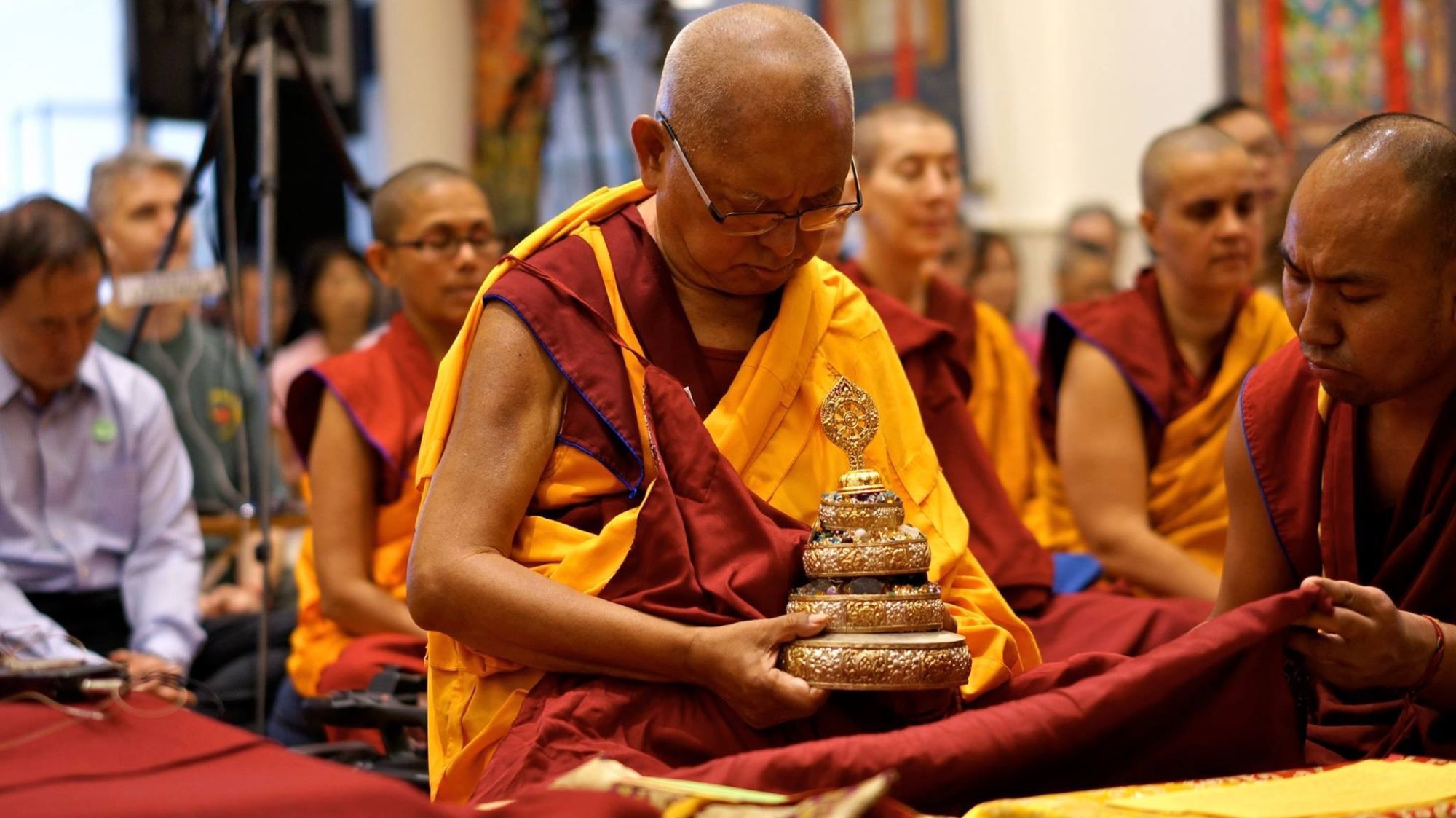
THE MANDALA OFFERING
(LC 32)
Lama Lhundrup would always offer a long mandala at this point when he was leading the Guru Puja at Kopan, and the present Kopan umdze does the same. It all depends on time. If there is time, you can do the long Mandala Offering of Thirty-Seven Heaps, om vajra bhumi ah hum wang chhen ser gyi sa zhi. If you don’t have time, it’s sufficient to do the shorter Mandala Offering of Twenty-Three Heaps (LC 32) je wa thrag gyäi ling zhi lhün por chä that is here in the Guru Puja text. It is the same.
As with the other highest tantra offerings there are four types of mandala: outer, inner, secret and absolute. The long Mandala of Thirty-Seven Heaps, the Mandala of Twenty-Three Heaps (LC 32) and the Short Mandala of Seven Heaps, sa zhi pö kyi, are all outer mandala offerings.
The inner mandala is visualizing all the parts of your body becoming a mandala—for example your two eyes become the sun and moon and so on—and offering that. It’s a mistake to think that the mandala offering of the Objects of the Three Poisonous Minds, dag gi chhag dang, is an inner mandala offering
DAG GI CHHAG DANG MONG SUM KYE WÄI YÜL
The objects of my attachment, anger, and ignorance—
DRA NYEN BAR SUM LÜ DANG LONG CHÖ CHÄ
Friends, enemies, strangers, body, and resources—
PHANG PA ME PAR BÜL GYI LEG ZHE NÄ
Without any sense of loss I offer them. Please accept them well,
DUG SUM RANG SAR DRÖL WAR JIN GYI LOB
And bless me to be spontaneously freed from the three poisons.
This talks about offering the merit field those objects on which the three poisonous minds of ignorance, anger and attachment arise. (You can’t say from where they arise because that would mean the three poisonous minds rise externally from those objects and then come into your brain!) I took this mandala offering from the Vajrayogini sadhana and put it in the prayer book a long time ago, in the early days at Kopan when we started teaching the courses, because I thought it was nice. It is not normally chanted in the monasteries; it’s only used for Vajrayogini practice. In the book it was called “inner mandala offering” but that was a mistake—it’s actually still an outer mandala.
The secret offering in highest tantra practice is visualizing yourself as the deity and the mandala in the essence of the transcendental wisdom of non-dual bliss and voidness. The absolute offering is viewing yourself, the action of offering the mandala and the merit field as empty. The whole thing is empty of existing from its own side. It is like offering a mandala in a dream.
WHAT IS A MANDALA OFFERING?
The mandala offering is an extremely powerful method for accumulating extensive merit and receiving realizations such as bodhicitta and emptiness quickly. Just as great strength is needed to carry a heavy load, a great amount of merit is needed to lead all sentient beings to enlightenment. There’s nothing that can be offered with your hands that is more meritorious than offering mandalas.
The Tibetan term for mandala is khyil-khor, which means “taking the essence.” The essence you take is the whole path from guru devotion to enlightenment. That’s what you get from doing this practice, plus the result: the unification of dharmakaya and rupakaya. Therefore by doing this practice you receive inconceivable temporal and ultimate happiness.
Read a compilation of teachings by Lama Zopa Rinpoche on the mandala offering: what it is, how to offer, etc.

The Elaborate Chanting for the Short Mandala of Seven Heaps
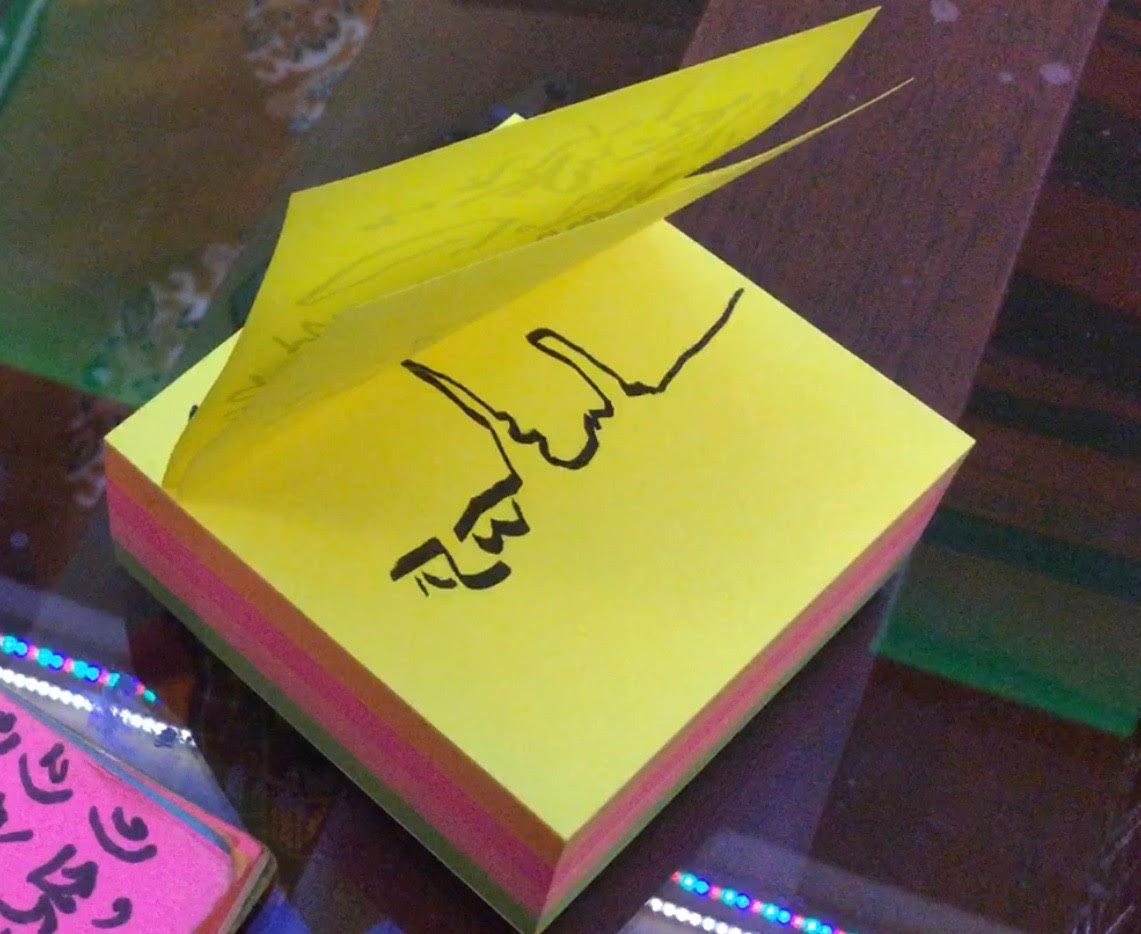
If you are going to offer the Short Mandala of Seven Heaps, it’s okay to use the short chanting that is commonly used—not the secret chanting of Dagpo Dorje Chang (Dagpo sangta)—but it would be good to know the long chanting. Of course everybody can learn this long chanting but especially the sangha should learn it. This is the chanting to be used when offering a mandala to request teachings, and it can also be used sometimes during pujas.
The beginning of the long chanting is quite precise. It goes up very fine and then comes down again making three curves. If you can get the beginning to turn out well then the rest is no problem.
My chanting is not very stable but it is like this
SA ZHI PÖ KYI JUG SHING ME TOG TRAM
This ground, anointed with perfume, strewn with flowers,
RI RAB LING ZHI NYI DÄ GYÄN PA DI
Adorned with Mount Meru, four continents, the sun and the moon:
SANG GYÄ ZHING LA MIG TE ÜL WA YI
I imagine this as a buddha-field and offer it.
DRO KÜN NAM DAG ZHING LA CHÖ PAR SHOG
May all living beings enjoy this pure land!
When you go up make it fine, then it’s very good. If the beginning comes out well the rest is no problem.
Oooooh-oooooh-oooooh sa zhi pö kyi…
At the moment my voice is a little bit broken. I think I took too much chili! So when I try to make my voice finer it doesn’t work. It’s like when the branches of a tree are broken and jagged.
The idea is that when you chant you go up fine and then come down with three curves. Then you go up again and at the end the voice becomes finer and finer. The idea is like that. Once you have the idea you can try it, but without having any idea it’s difficult. I’ll try one more time
Oooooh-oooooh-oooooh sa zhi pö ky-i-i-i-i-i

If you make the oooooh too long at the beginning, you won’t have enough breath left at the end and will have to stop abruptly. So you have to find a sort of middle way, not going up fine too early, or too late. Then you will have enough breath left to complete the chanting.
Anybody can learn this chanting, but the sangha in particular should learn it. Don’t just always do the normal chanting. This long chanting is something that needs to be learned.
The Elaborate Chanting for the Twenty-Three Heap Mandala
(LC 32)
You have been chanting this one quite well.
LC 32
JE WA THRAG GYÄI LING ZHI LHÜN POR CHÄ
Mount Meru and the four continents,
RIN CHHEN DÜN DANG NYE WÄI RIN CHHEN SOG
The seven precious royal emblems, the precious minor symbols and so forth,
KÜN GA KYE PÄI NÖ CHÜ PHÜN SUM TSHOG
Perfect environments and beings that give rise to complete joy,
LHA MII LONG CHÖ DÖ GÜI TER CHHEN PO
A great treasure of all that gods and humans use or desire
DANG WÄI SEM KYI PHÜL JUNG ZHING GI CHHOG
I present a billion times over with a mind of pure faith to the supreme field,
KYAB GÖN THUG JEI TER LA ÜL WAR GYI
The treasure of compassion, the refuge savior.
The Medium Chanting for the Twenty-Three Heap Mandala
(LC 32)
LC 32
JE WA THRAG GYÄI LING ZHI LHÜN POR CHÄ
Mount Meru and the four continents,
RIN CHHEN DÜN DANG NYE WÄI RIN CHHEN SOG
The seven precious royal emblems, the precious minor symbols and so forth,
KÜN GA KYE PÄI NÖ CHÜ PHÜN SUM TSHOG
Perfect environments and beings that give rise to complete joy,
LHA MII LONG CHÖ DÖ GÜI TER CHHEN PO
A great treasure of all that gods and humans use or desire
DANG WÄI SEM KYI PHÜL JUNG ZHING GI CHHOG
I present a billion times over with a mind of pure faith to the supreme field,
KYAB GÖN THUG JEI TER LA ÜL WAR GYI
The treasure of compassion, the refuge savior.
The Short Chanting for the Twenty-Three Heap Mandala
(LC 32)
LC 32
JE WA THRAG GYÄI LING ZHI LHÜN POR CHÄ
Mount Meru and the four continents,
RIN CHHEN DÜN DANG NYE WÄI RIN CHHEN SOG
The seven precious royal emblems, the precious minor symbols and so forth,
KÜN GA KYE PÄI NÖ CHÜ PHÜN SUM TSHOG
Perfect environments and beings that give rise to complete joy,
LHA MII LONG CHÖ DÖ GÜI TER CHHEN PO
A great treasure of all that gods and humans use or desire
DANG WÄI SEM KYI PHÜL JUNG ZHING GI CHHOG
I present a billion times over with a mind of pure faith to the supreme field,
KYAB GÖN THUG JEI TER LA ÜL WAR GYI
The treasure of compassion, the refuge savior.
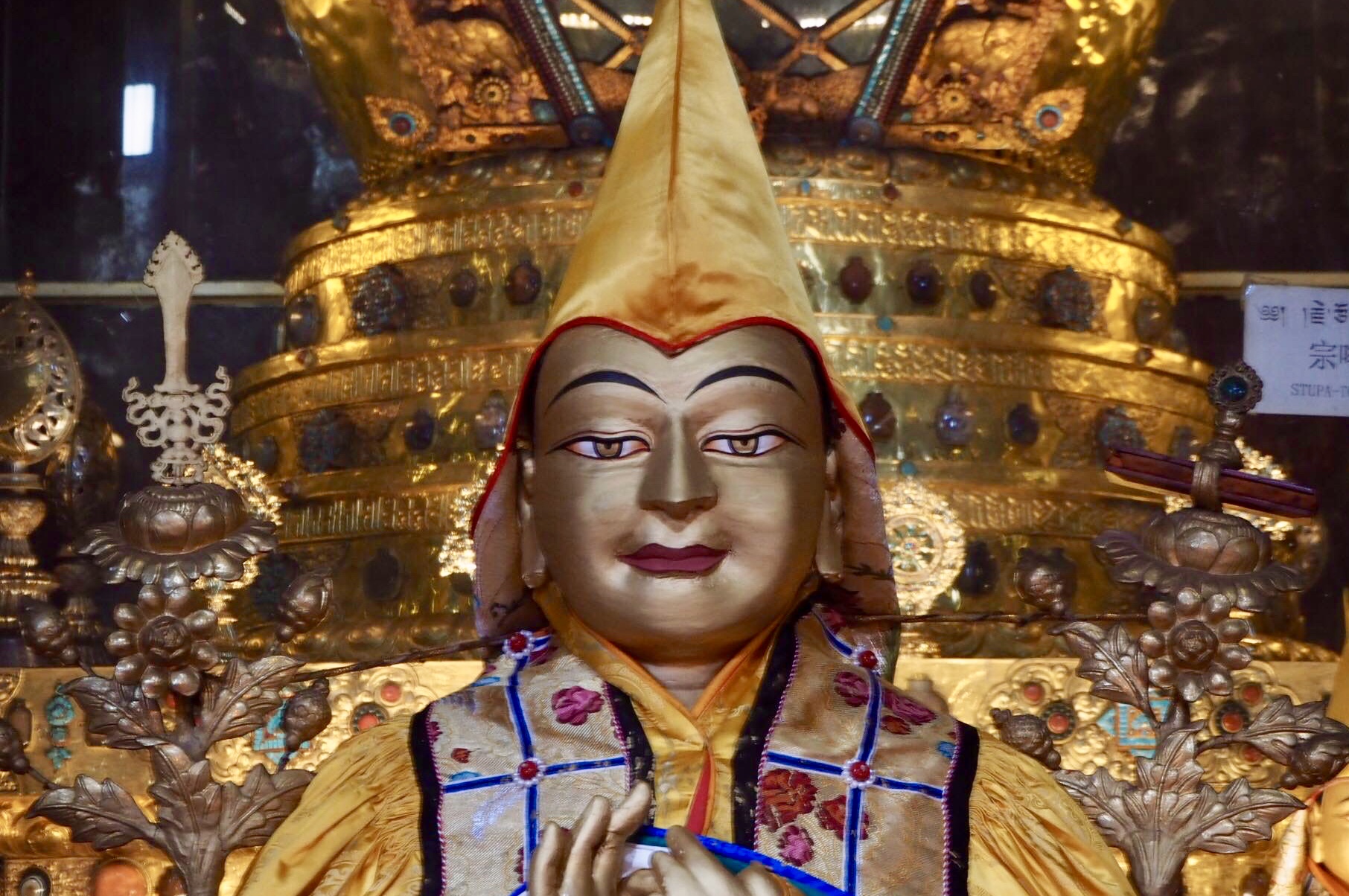
Dedicating to Meet with Lama Tsongkhapa’s Teachings
At the end of the mandala offering you should dedicate the merits for yourself and others to meet with Lama Tsongkhapa’s teachings. Especially dedicate for your family members, all the students, benefactors and the many people who are offering service and dedicating their lives to the FPMT organization as well as everyone else in this world. You can do this by reciting the prayer composed by the Fifth Dalai Lama
MÄ JUNG NAM THAR TSANG MÄI THRIM DANG DÄN
May I and all sentient beings meet the teachings of the victorious one, Lozang Dragpa,
LAB CHHEN GYÄL SÄ CHÖ PÄI NYING TOB CHHE
Who lived an eminent life endowed with pure morality,
DE TONG CHHOG GI RIM NYI NÄL JOR GYI
A brave heart in doing the bodhisattva’s extensive deeds,
LO ZANG GYÄL WÄI TÄN DAG JÄL WAR SHOG
And the yoga of the two stages, the essence of which is the transcendental wisdom of nondual bliss and emptiness.
This is an extremely important dedication prayer and that’s why I put it here. I deliberately added this requesting prayer. The more you study Lama Tsongkhapa’s teachings, the more you will understand why we need to dedicate like this to be able to meet, actualize and spread the teachings of Lama Tsongkhapa in the hearts of sentient beings.
Lama Tsongkhapa Gave the Clearest Explanation of the Buddha’s Teachings
Take for example Lama Tsongkhapa’s lamrim teachings, the Great and Middle Stages of the Path to Enlightenment. You may have read other lamrim texts for a long time, but then when you read Lama Tsongkhapa’s lamrim teachings–ohhhhh! It is a totally different feeling from other lamrims. Even a few words are very powerful and give a very deep and vast understanding like an ocean. That’s the particular experience you get from Lama Tsongkhapa’s way of teaching the Dharma.
The late Head of the Nyingma School of Tibetan Buddhism, Kyabje Dudjom Rinpoche, wrote a religious history of the four Tibetan Mahayana traditions–Nyingma, Kagyü, Sakya and Gelug—and at the end of the section on the Gelug he explained
Lama Tsongkhapa gave the clearest explanation of the Buddhas’ teaching.
I saw this point myself because Lama Yeshe had a copy of the book. The reason I bring it up from time to time is because it is the head of another tradition praising Lama Tsongkhapa in this way.
Lama Tsongkhapa put special effort into clarifying any difficult points in the teachings, such as emptiness in sutra and the illusory body in tantra. He gave a very detailed and extensive explanation of the methods for achieving the illusory body, which is the particular subject of the Guhysamaja tantra—previous explanations had not been so detailed. Also, in the lamrim teachings Lama Tsongkhapa put special effort to correct many of the points where previous famous meditators had made mistakes.
The benefit of having such clear teachings is that if you study well your understanding of the Dharma will become like an ocean—very deep and profound, wide and extensive. The more you learn, the less mistakes you will make in your practice, and due to having a correct understanding the correct realizations will come easily. When you don’t have much understanding, or your understanding is unclear, you make a lot of mistakes and then you experience great difficulties in attaining realizations. This shows why it’s very important to study Lama Tsongkhapa’s teachings.
Of course that doesn’t mean you can’t study other traditions. His Holiness advises other traditions to study Lama Tsongkhapa’s teachings and Gelugpas to learn the other traditions’ teachings out of respect. So those who have the time and capacity can do this.
“The more you study Lama Tsongkhapa’s teachings, the more you will understand why we need to dedicate to be able to meet, actualize and spread these teachings in the hearts of sentient beings.”
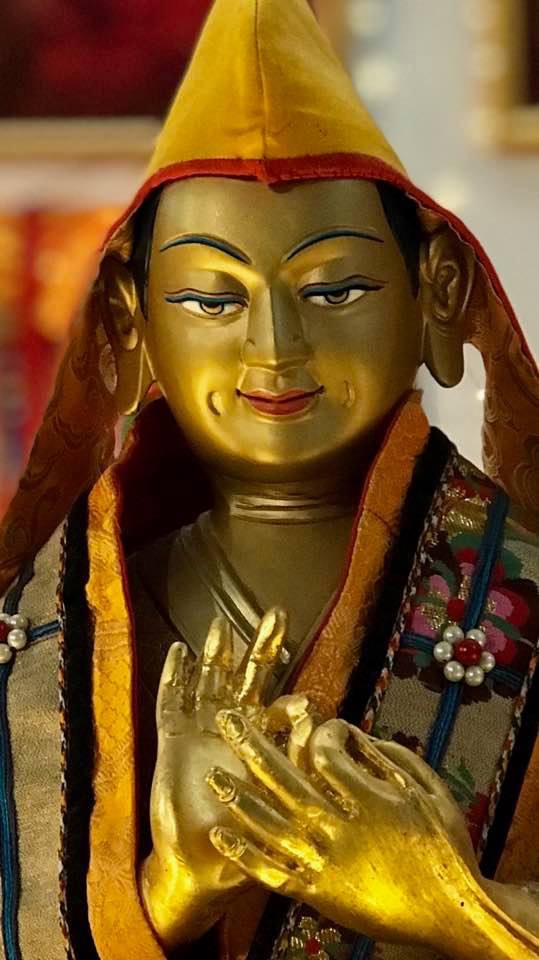
Let’s say you are going to make chai or momo or pizza or ice cream. First you need good ingredients and second you need a good understanding of how to make these things. Then they can turn out delicious—yum yum! It’s exactly the same when you are practicing Buddhism or any other religion. If you have the best teachings and a clear understanding of how to practice, then without much hardship you can easily achieve unmistaken realizations. It doesn’t have to take many eons, or many hundreds of lifetimes.
Even though the Buddha’s teachings are very vast and there are hundreds of volumes (the Kangyur has around a hundred volumes and the Tengyur around two hundred volumes of commentaries to the Buddha’s teachings by the Indian yogis and pandits) the essence of all these is to actualize the realizations of guru devotion, renunciation, bodhicitta and right view as the foundation and then the two stages of tantra in order to achieve the unification of no more learning, the holy body (rupakaya) and holy mind (dharmakaya). This is the very heart of the teachings. No matter how vast the Buddha’s teachings are what you shoulddo is actualize this path to enlightenment (lamrim) in your heart. Your mind has to become lamrim and then you achieve the dharmakaya. This can all happen veryeasily by relying on Lama Tsongkhapa’s teachings. You can gain unmistaken realization without much difficulty. You can have quick success and great success on the basis of correctly devoting to the virtuous friend.
That’s why it is very important to recite this prayer to meet with Lama Tsongkhapa’s teachings. You will only really understand this as you learn more. Without studying, you won’t be able to grasp how special the teachings are. There are eighteen volumes of teachings by Lama Tsongkhapa including: The Great Stages of the Path to Enlightenment, The Great Exposition of Secret Mantra, A Lamp to Illuminate the Five Stages—which has the most incredible details on the completion stage of the tantric path—and the sutra commentary, Ocean of Reasoning: A Great Commentary on Nagarjuna’s Mulamadhyamakarika the Root Wisdom. The more you study these texts— starting with the lamrim teachings and then philosophical scriptures like The Essence of True Eloquence and so forth—the more you will understand how special they are. But first you have to study. Otherwise you will have no idea. It’s only through study and especially through realization that you can really understand Lama Tsongkhapa’s teachings.
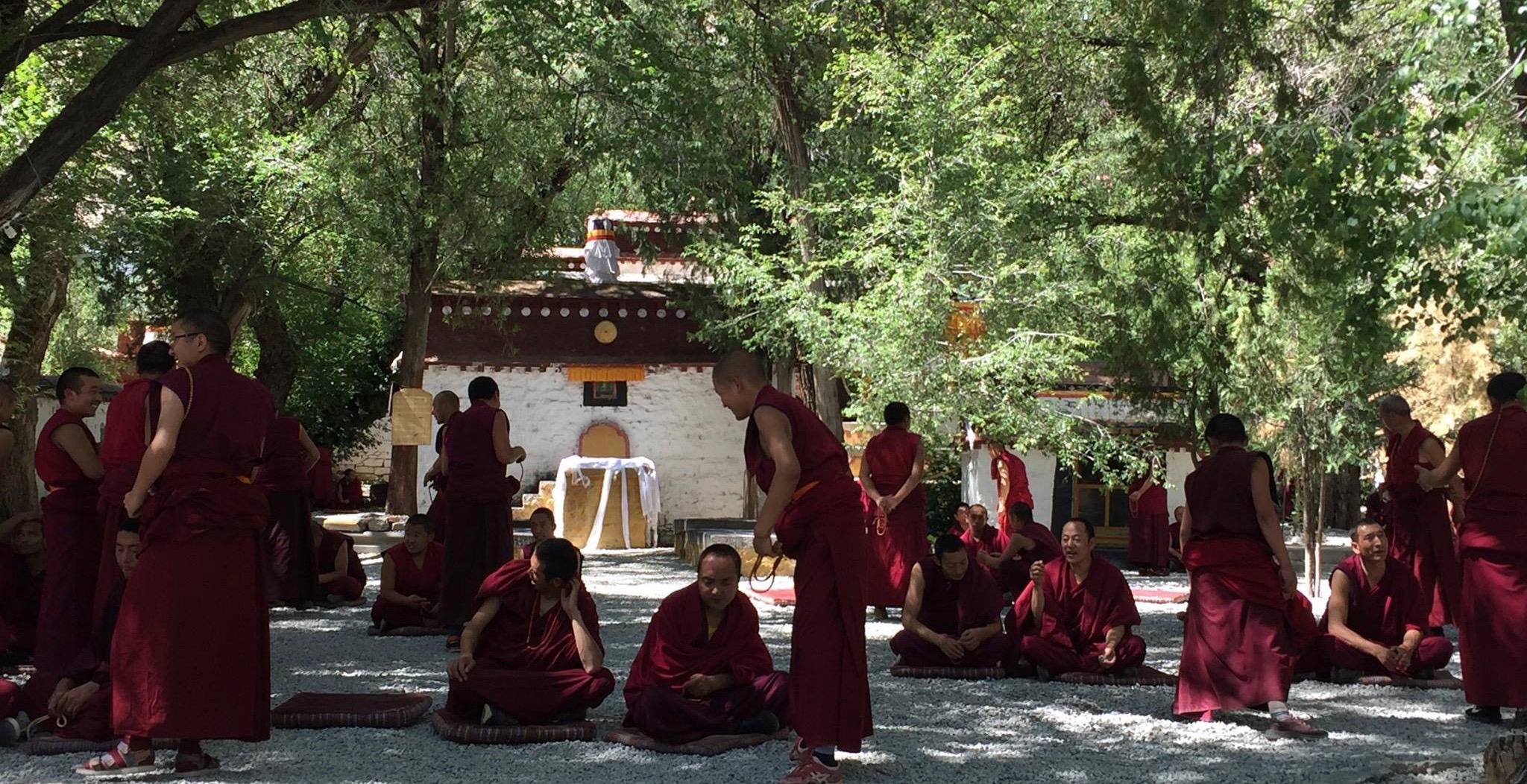
“It’s only through study and especially through realization that you can really understand Lama Tsongkhapa’s teachings.”
Two Meanings of Dependent Arising
For example, it says in the Three Principal Aspects of the Path to Enlightenment
[9] Without the wisdom realizing ultimate reality,
Even though you have generated renunciation and the mind of enlightenment
You cannot cut the root cause of circling.
Therefore, attempt the method to realize dependent arising.
Lama Tsongkhapa is saying here is that it’s not enough just to have actualized bodhicitta, you must put effort to realize dependent arising.
When I discussed this with Kyabje Choden Rinpoche he said that it is talking about the gross dependent arising. That is the usual explanation. But Geshe Lamrimpa of Drepung Monastery in Tibet and also Kyabje Denma Lochö Rinpoche both said that it means emptiness. According to Kyabje Pabongka Rinpoche gross dependent arising helps to realize both emptiness and subtle dependent arising.
The next verse continues
[10] One who sees the cause and effect of all phenomena
Of both cyclic existence and the state beyond sorrow as forever unbetraying
Here “seeing the cause and effect of all phenomena of both cyclic existence (samsara) and the state beyond sorrow (nirvana) as forever unbetraying” is not only seeing the cause and effect of outer phenomena as unbetraying—for example, that planting a seed is the cause for the result of a flower or fruit to grow—but also seeing that of inner phenomena as unbetraying—that nonvirtue is the cause of a suffering result and virtue is the cause of a result of happiness.
Actions done with bodhicitta bring enlightenment and actions done with renunciation bring liberation. Whatever the activity may be—not only meditation, prayers and studying Dharma, but also eating, walking, sitting, sleeping and everything else—if it is done with bodhicitta the result will be enlightenment, if it is done with renunciation it becomes the cause to achieve liberation from samsara, and if it is done with right view, unstained by ignorance, it becomes the cause to achieve liberation. (Actions done with right view are the antidote to samsara because they are the antidote to ignorance and that means they are the antidote to all the delusions.) Then, even if you have renunciation, without bodhicitta your actions only become the cause to achieve liberation. Without renunciation, whatever you do becomes the cause of samsara. Without the renunciation of future lives in samsara, whatever you do becomes negative karma and the cause of the lower realms. Without renunciation of this life, everything you do—eating, walking, sitting, sleeping, working—becomes negative karma and the cause of rebirth in the lower realms.
Therefore, having the definite understanding that results follow their causes and that this is unbetraying—in other words, that virtue leads to happiness and nonvirtue leads to suffering—is one way of understanding seeing the cause and effect of all phenomena as unbetraying.
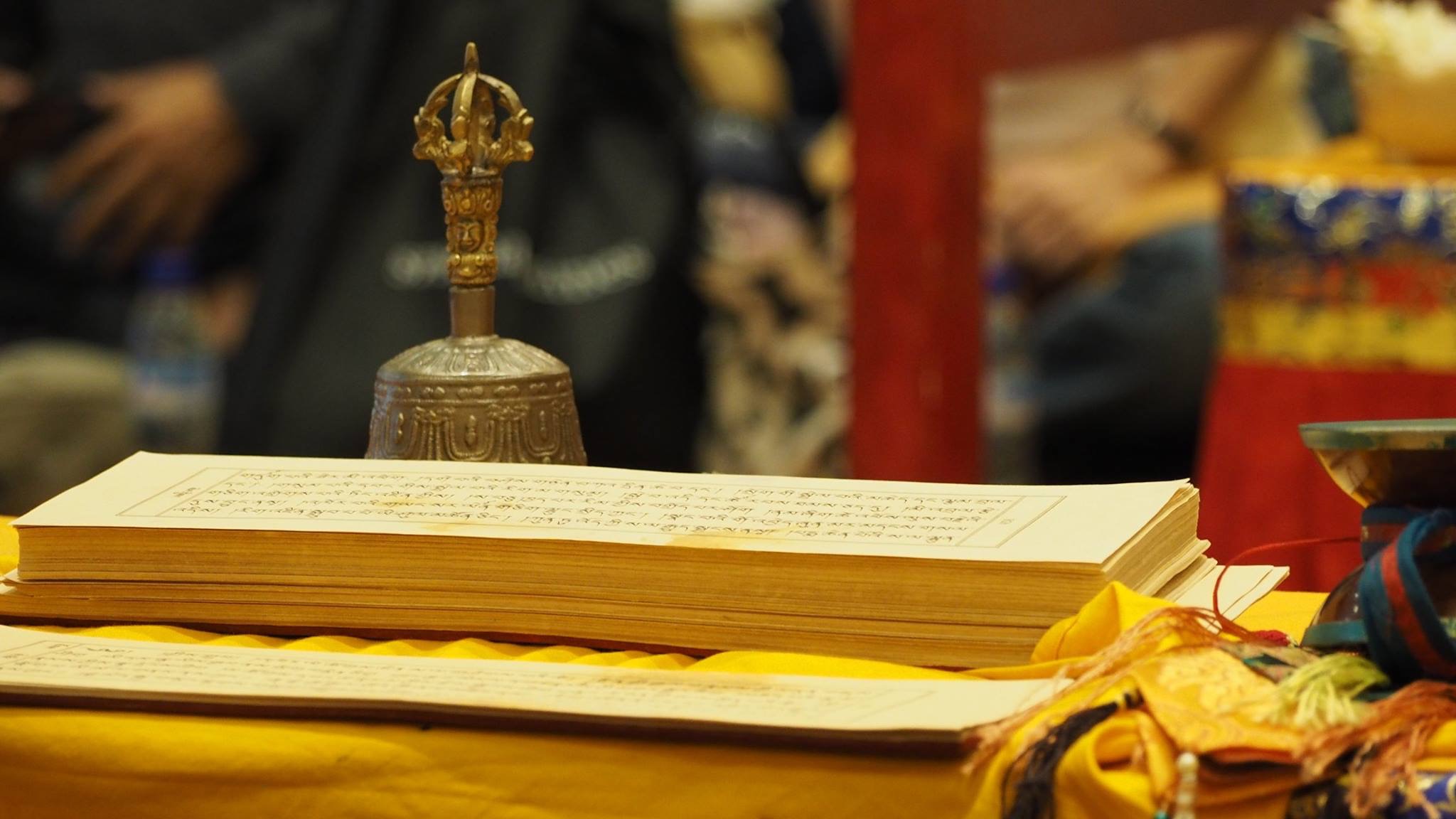
Then my guess is that what may also be contained here is that after you realize that the I is empty, that acts as a cause to then realize as a result the conventional truth of the I—the truth for the all-obscuring mind—that the I exists.
The real I has appeared to your hallucinated mind and you have been believing in it since beginningless rebirths. This real I appears to exist from its own side, not as merely labeled by mind, then you hold onto that appearance as one hundred per cent true. When you discover the truth of the I, or the self, that it is completely totally empty of existing from its own side, that wisdom is the cause and the result that arises from it is the understanding that the I existsbut it exists in mere name, merely imputed by the mind.
As a result, you come to understand that the I exists but, while it is exists, it is completely totally empty, and while it is totally empty it exists. In this way, emptiness and dependent arising are unified. Within this one phenomena, this I, is unified emptiness and dependent arising. That’s the middle way view, the Madhyamaka view, the Prasangika school view that is devoid of nihilism and eternalism.
This wisdom is the only one that can directly cut the ignorance that is the root of samsara and free you from oceans of samsaric suffering along with the causes, karma and delusions. This is the wisdom that can eliminate the ignorance that has tortured you from beginningless rebirth. You have been overpowered or condemned by this dictator, your ignorance. So if you don’t like dictatorships, first of all you should eliminate this ignorance, the king of delusions, which causes all the other delusions to arise, like anger and attachment, and keeps your life in the prison of suffering with somany problems. If you are really fighting for freedom, if you really want freedom, you should look for freedom from ignorance, the three poisonous minds and the self-cherishing thought. That is the most worthwhile freedom to fight for day and night, no matter how many years or eons it takes.
Anyway, my guess is that “seeing the cause and effect of all phenomena of cyclic existence and the state beyond sorrow as forever unbetraying” means not only having a definite understanding that happiness comes from virtue and suffering from nonvirtue, but also that from the realization seeing all phenomena as empty as a cause, you realize the conventional truth of phenomena as a result—how phenomena and the I exist.
“If you don’t like dictatorships, first you should eliminate ignorance, the king of delusions, which keeps your life in the prison of suffering.”
The next part of the verse is not so easy to translate. I began translating the The Three Principal Aspects of the Path to Enlightenment on my second visit to Kadampa Center. Geshe Gelek had just arrived and I started teaching The Three Principal Aspects but didn’t finish. Later I completed the translation of the text and I managed to get an exact translation of this due to the blessing of the Buddha and my gurus. It says
10
And for whom the objects entrusted to by the mind are lost just there
Has at that time entered in the path that pleases all the Buddhas.
When it talks about the objects entrusted to by your mind—that mind is ignorance, not wisdom. It’s talking about the superstitious thought. The wrong concept entrusts itself to the truly existent I, which is fabricated or projected by the ignorance that leaves a negative imprint on the mind.
In the first second the mind merely imputes an “I,” and the next second, ignorance immediately projects the hallucination of true existence on that, due to the negative imprint. It’s like a roll of film filled with many images of places and people doing all kinds of incredible things printed on it that can be fed into a projector and projected onto a movie or TV screen. Here this ignorance leaves a negative imprint on the mind that then projects a truly existent I on the merely labeled I. The truly existent I is decorated on the merely labeled I, and the next second your hallucinated mind sees a real I, that is not merely labeled by your mind. Even though your mind merely labeled the I just the second before, you are not at all aware of this. Instead your ignorance holds onto the I and completely entrusts that it is one hundred percent correct.
The next word kun shikpa means that the I is lost just there or completely disappeared. Lost just there implies that the I doesn’t go anywhere. It is lost just there but it doesn’t go anywhere else. It doesn’t leave through the windows or doors and go to the beach or somewhere else! It is not lost in that way—that would mean it still exists. Lost just there means that what you are holding onto and entrusting is completely totally lost just there. It disappeared. It became totally non-existent right there.
This is not to say that something that has been existing since beginningless rebirths now no longer exists. That would be wrong view. Here we are talking about something that has never existed at all from the beginning, but you have never recognized or discovered that, and instead believed it to exist. It is only now that you see that it’s not there. Do you understand? What you entrusted completely disappears. It is totally lost just there. It becomes totally non-existent there. That’s what you see. The person who sees that has entered in the path that pleases all the Buddhas.
Once you have had this experience, it doesn’t matter what blah blah blah other people tell you—that Lama Tsongkhapa’s view is wrong, my view is right, etc. etc. your mind won’t change because you know from your own experience that the truth is exactly as Lama Tsongkhapa explained. Whatever others may say, they cannot cheat or mislead you no matter how expert or learned they may be. You have your own experience and you have seen for yourself the truth of what Lama Tsongkhapa explained.

“You come to understand that the I exists but, while it is exists, it is completely totally empty, and while it is totally empty it exists. In this way, emptiness and dependent arising are unified.”
This is just one example, but there are many other examples like this of points where Lama Tsongkhapa made the teachings very clear. For example, in the teachings on calm abiding there are two obstacles to perfect meditation that need to be recognized—attachment scattering thought and sinking thought. (I added the word attachment to scattering thought for the Tibetan word göpa. There is a scattering thought that is also virtuous—when your mind scatters to other virtuous objects. Göpa is scattering thought combined with attachment. Therefore the correct translation for this is attachment scattering thought. Otherwise if you translate göpa—scattering thought to objects of attachment—the same as trowa—scattering thought in general—then what word will you use when you translate trowa? Trowa doesn’t need to be with attachment but göpa has to be with attachment. There is gross and subtle attachment scattering thought and gross and subtle sinking thought—jingwa. These two are the obstacles to achieving perfect meditation.)
Many meditators cannot recognize subtle sinking thought and think they have achieved perfect meditation. Subtle sinking thought is when the object of meditation is clear but the intensiveness of the concentration holding onto the object is missing, it’s weak. There’s no energy in the mind holding the object. In the past many meditators could not recognize this subtle sinking thought and thought they had perfect meditation. The problem is that if you don’t practice the antidote to subtle sinking thought, you will never be able to cut it, and then you cannot actualize the full characteristics of calm abiding meditation. You may think you have achieved perfect meditation but you are wrong, even though you can see the object of concentration clearly.

This is another example where Lama Tsongkhapa made the teachings very clear. When you have done more study like this, you will have all the knowledge you need to know whether your meditation is correct or incorrect when you meditate on the lamrim. You will understand how to do correct meditation and achieve the correct realizations. Even if you go far away to a very isolated place, as much as you have studied, you will be able to recognize all the mistakes and correct them. Then, by knowing how to practice, you can quickly have great success and attain realizations.
Otherwise, if you have very little understanding of Dharma and go to an isolated place where it’s difficult to find food for retreat, you will make many mistakes due to ignorance and lack of understanding, and it will take a long time and be difficult to achieve correct realizations. I’m not even sure if you would be able to achieve realization this lifetime.
Sorry, I was supposed to just introduce the chanting but then it became a talk!
OFFERING OF PRACTICE
(LC 33)
Following the mandala offering is the Offering of Practice to the guru (LC 33) ngö sham yi trül. The elaborate chanting for this verse comes from the Heruka Guru Puja, and I would request you to use this when the puja is done in a group. When you are alone it is up to you whether to chant it or not, but when you are in a group I would like the elaborate chanting used.
At the end of the verse you stop; and there is a different chanting from the Inner Offering (LC 34) to the end of the offering section (LC 37). These remaining offerings are secret and should be chanted in Tibetan so that any new people in the group don’t misunderstand the meaning. The chanting can be done faster.
The Elaborate Chanting for the Offering of Practice
(LC 33)
You must always start this chanting with a high voice, not a low voice. As you reach the end of the verse, the chanting should gradually slow down. A useful technique might be to take a deep breath before starting—then you will have enough breath left at the end to finish the chanting nicely. When this is chanted in the monasteries, it goes higher and higher as the verse progresses.Use the elaborate chanting when you are in a group.
LC 33
NGÖ SHAM YI TRÜL YI ZHIN GYA TSHÖI NGOG
Thousand-petalled lotuses grow on the shore of a wishgranting ocean,
SI ZHII NAM KAR LÄ WONG CHHÖ DZÄ KYI
Both actually set out and mentally emanated.
DAB TONG GYÄ PÄ KÜN GYI YI THROG CHING
Arising from the virtues of samsara and nirvana, they captivate all minds.
JIG TEN JIG TEN LÄ DÄ RANG ZHÄN GYI
Everywhere are flowers—the worldly and transcendent virtues
GO SUM GE WÄI ME TOG CHI YANG TRA
Of the three doors of myself and others
KÜN ZANG CHHÖ PÄI DRI SUNG BUM THRO ZHING
And a hundred thousand fragrant Samantabhadra offerings spread.
LAB SUM RIM NYI LAM NGÄI DRÄ DÄN PÄI
This pleasure grove laden with fruits of the three trainings,
GA TSHÄL JE TSÜN LA MA NYE CHHIR BÜL
Two stages, and five paths I offer to please you perfect, pure gurus.
It’s more or less like that. When you go up, try to go up very fine. That’s one thing that makes it sound better. I have still some chili or something in my throat so it sounded jagged.
The Medium Chanting for the Offering of Practice
(LC 33)
The medium chanting is what you normally do so you can continue doing that.
LC 33
NGÖ SHAM YI TRÜL YI ZHIN GYA TSHÖI NGOG
Thousand-petalled lotuses grow on the shore of a wishgranting ocean,
SI ZHII NAM KAR LÄ WONG CHHÖ DZÄ KYI
Both actually set out and mentally emanated.
DAB TONG GYÄ PÄ KÜN GYI YI THROG CHING
Arising from the virtues of samsara and nirvana, they captivate all minds.
JIG TEN JIG TEN LÄ DÄ RANG ZHÄN GYI
Everywhere are flowers—the worldly and transcendent virtues
GO SUM GE WÄI ME TOG CHI YANG TRA
Of the three doors of myself and others
KÜN ZANG CHHÖ PÄI DRI SUNG BUM THRO ZHING
And a hundred thousand fragrant Samantabhadra offerings spread.
LAB SUM RIM NYI LAM NGÄI DRÄ DÄN PÄI
This pleasure grove laden with fruits of the three trainings,
GA TSHÄL JE TSÜN LA MA NYE CHHIR BÜL
Two stages, and five paths I offer to please you perfect, pure gurus.
The Short Chanting for the Offering of Practice
(LC 33)
And this is the quick way of chanting
LC 33
NGÖ SHAM YI TRÜL YI ZHIN GYA TSHÖI NGOG
Thousand-petalled lotuses grow on the shore of a wishgranting ocean,
SI ZHII NAM KAR LÄ WONG CHHÖ DZÄ KYI
Both actually set out and mentally emanated.
DAB TONG GYÄ PÄ KÜN GYI YI THROG CHING
Arising from the virtues of samsara and nirvana, they captivate all minds.
JIG TEN JIG TEN LÄ DÄ RANG ZHÄN GYI
Everywhere are flowers—the worldly and transcendent virtues
GO SUM GE WÄI ME TOG CHI YANG TRA
Of the three doors of myself and others
KÜN ZANG CHHÖ PÄI DRI SUNG BUM THRO ZHING
And a hundred thousand fragrant Samantabhadra offerings spread.
LAB SUM RIM NYI LAM NGÄI DRÄ DÄN PÄI
This pleasure grove laden with fruits of the three trainings,
GA TSHÄL JE TSÜN LA MA NYE CHHIR BÜL
Two stages, and five paths I offer to please you perfect, pure gurus.
INNER, SECRET, SUCHNESS AND SERVICE OFFERINGS
(LC 34-37)
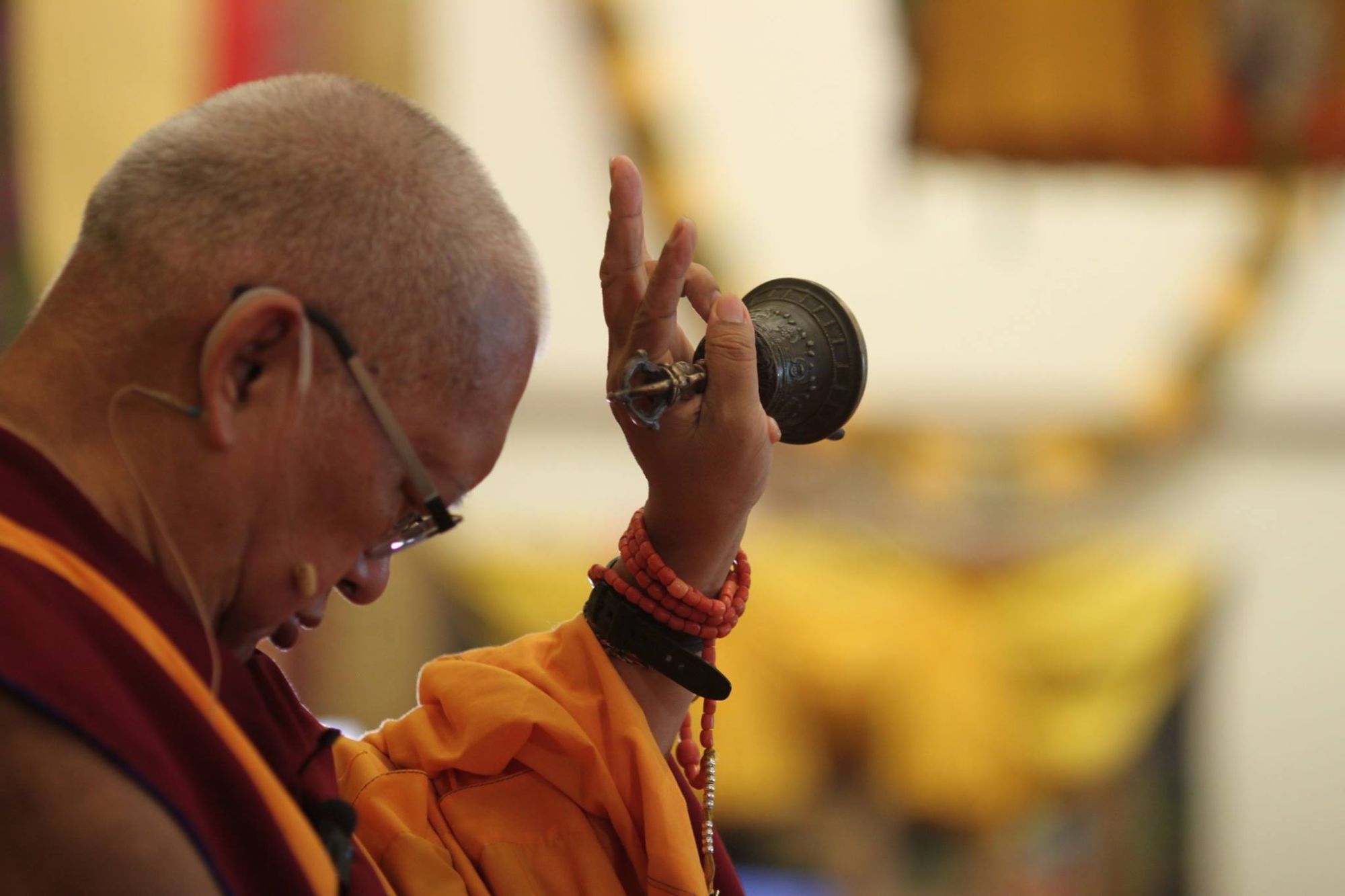
HOW TO OFFER THE INNER OFFERING
When you make the inner offering hold the vajra and bell, symbolizing bliss and voidness. According to His Holiness Zong Rinpoche you hold the inner offering container up. There are two ways of offering
- Facing forwards and flicking the inner offering upwards (Upper Tantric College: Gyuto).
- Facing forwards and flicking the inner offering downwards (Lower Tantric College: Gyume).
Then there is the inji way—what the Westerners do!
The outer offerings are finished; now the Inner Offering (LC 34). The inner offering is visualizing the substances from inside your body purified and transformed into nectar. When you do the meditation for the inner offering it’s actually a complete path to enlightenment in itself. The essence of the whole path is there.
As I mentioned previously, it is better to chant these verses in Tibetan to keep the meaning secret.
LC 34
GUR KUM DANG DÄN ZANG PÖI DRI NGÄ CHÄN
I offer a drink of China tea, saffron bright,
RO GYÄI PÄL DZIN GYA JÄI TUNG WA DANG
Imbued with delicious scents and rich with a hundred flavors.
CHAG KYU NGA DANG DRÖN MA NGA LA SOG
The five hooks, five lamps, and so forth
JANG TOG BAR WÄI DÜ TSII GYA TSHÖ CHHÖ
Are purified, transformed, and increased into an ocean of nectar.
Now the Secret Offering
LC 35
YI ONG LANG TSHÖI PÄL DZIN DRUG CHU ZHII
I offer illusion-like consorts of youthful splendor,
DÖ PÄI GYU TSÄL LA KHÄ LÜ THRA MA
Slender and skilled in the sixty-four arts of love:
ZHING KYE NGAG KYE LHÄN KYE PHO NYÄI TSHOG
A host of beautiful messenger dakinis,
DZE DUG GYU MÄI CHHAG GYA NAM KYANG BÜL
Field-born, mantra-born, and simultaneously born.
Next the Suchness Offering
LC 36
DRIB DRÄL LHÄN KYE DE WÄI YE SHE CHHE
Unobstructed great transcendental wisdom simultaneous with bliss,
CHHÖ KÜN RANG SHIN TRÖ DANG DRÄL WÄI YING
The sphere free from elaboration, the nature of all phenomena,
YER ME LHÜN DRUB MA SAM JÖ LÄ DÄ
Spontaneous and indivisible, beyond thought and expression:
DÖN DAM JANG CHHUB SEM CHHOG KHYÖ LA BÜL
Supreme ultimate bodhichitta, I offer to you.
The final verse (LC 37) is offering all the medicines that destroy the 404 diseases caused by delusions and then offering oneself as a servant to the gurus to be guided until enlightenment is achieved
LC 37
NYÖN MONG ZHI GYA TSA ZHII NÄ JOM PÄI
To cure the 404 diseases caused by mental afflictions
ZANG PÖI MÄN GYI JE DRAG NA TSHOG DANG
I offer all kinds of wholesome medicine
KHYÖ NYE GYI CHHIR DAG DRÄN BÜL LAG NA
And I offer myself as a servant to please you.
NAM KHA JI SI BANG SU ZUNG DU SÖL
Pray keep me in your service as long as space endures.
The Elaborate Chanting for the Inner, Secret, Suchness and Service Offerings
(LC 34-37)
The Medium Chanting for the Inner, Secret, Suchness and Service Offerings
(LC 34-37)
The Short Chanting for the Inner, Secret, Suchness and Service Offerings
(LC 34-37)
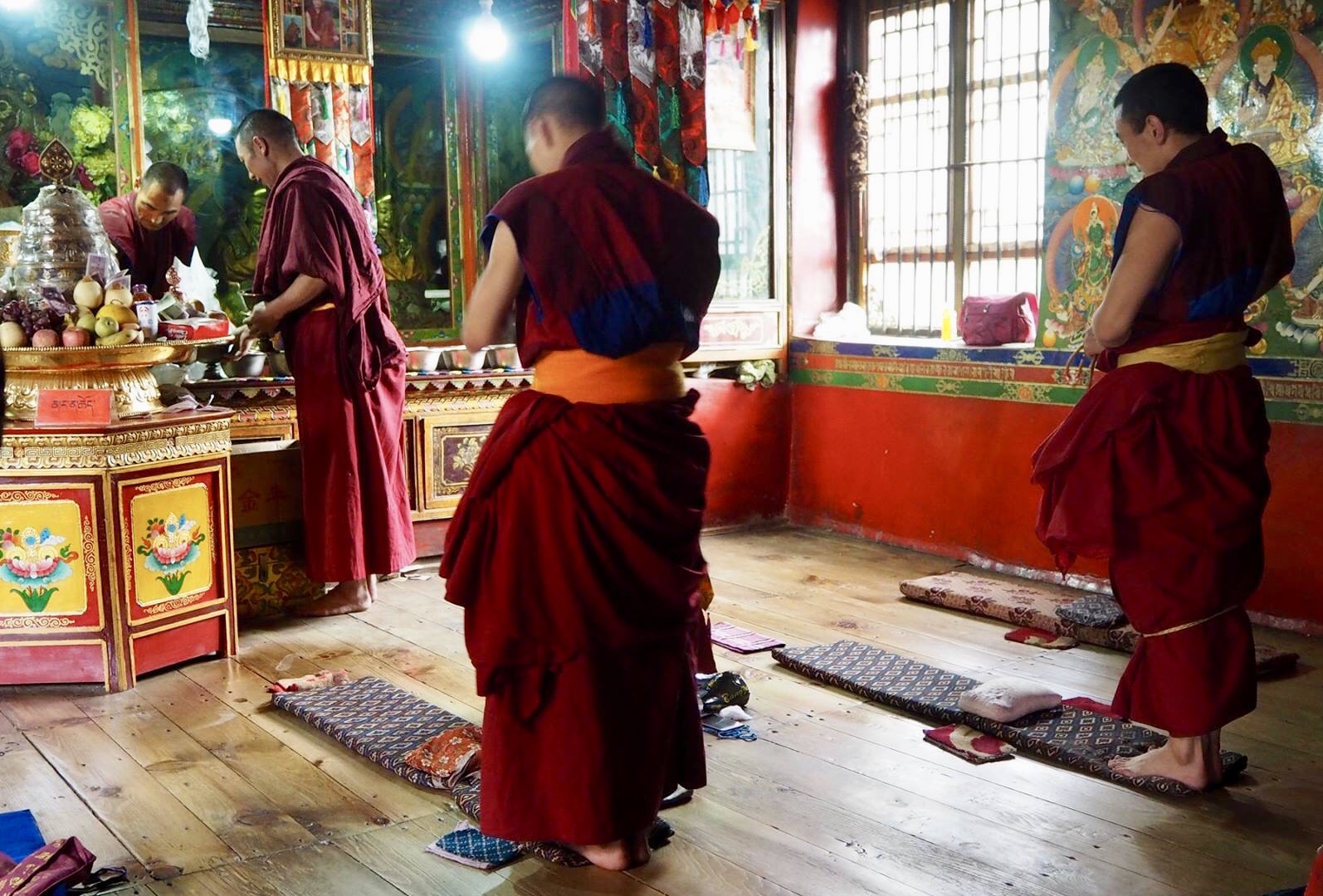
The Third Limb: Confession of Nonvirtue
(LC 38)
HOW TO DO THE LIMB OF CONFESSION IN THE GURU PUJA
When there is time
- First, recite the Confession of Downfalls to the Thirty-five Buddhas straight through followed by the General Confession.
- Then renew the bodhisattva and tantra vows for those who have previously received them.
- Next, purify with Vajrasattva, or Samayavajra, either choosing one or alternating.
- Finally, recite the Confession of Nonvirtue (LC 38).
THE THIRTY-FIVE BUDDHAS OF CONFESSION
Now, one thing I want to say here is that if you haven’t already done the Confession of Downfalls to the Thirty-Five Buddhas—especially with prostrations—as a preliminary before starting the Guru Puja, then you must recite the names of the thirty-five buddhas at this point. Of course sometimes it’s not possible because you have to do the puja very quickly, but otherwise you must recite the thirty-five buddhas’ names because reciting even the first buddha’s name once purifies eighty trillion eons of negative karma.
LA MA TÖN PA CHOM DÄN DÄ DE ZHIN SHEG PA DRA CHOM PA YANG DAG PAR DZOG PÄI SANG GYÄ PÄL GYÄL WA SHA KYA THUB PA LA CHHAG TSHÄL LO
To the Guru, Teacher, Bhagavan, Tathagata, Arhat, Perfectly Complete Buddha, Glorious Conqueror Shakyamuni, I prostrate.
Eighty trillion eons is the number given in the Kangyur (80,000,000,000,000, kalpa che wa gya trag gye tri—10 million x 100 x 80,000). The general teachings of the lineage lamas of the graduated path to enlightenment mention 40,000 eons of negative karma. Reciting the name of this buddha once, purifies not years, but many eons of negative karma, and that means you will achieve enlightenment much quicker. Another benefit is that you will meet the tantric teachings again. So this is very important. It makes a huge difference to your life whether you recite this buddha’s name or not in terms of purifying past negative karma and achieving enlightenment quickly. If you don’t recite it, you won’t receive all this benefit.
“Reciting even the first buddha’s name once purifies eighty trillion eons of negative karma.”
It is similar with the other buddhas’ names, reciting them even one time purifies many eons, and all different types, of negative karma. The Tathagata Glorious Flower, for example, purifies 100,000 eons of negative karma
DE ZHIN SHEG PA ME TOG PÄL LA CHHAG TSHÄL LO
To Tathagata Glorious Flower, I prostrate.
Therefore you must understand the importance of reciting the Thirty-five Buddhas practice rather than putting it to one side. A billion dollars is nothing compared to this. It was common for the lamrim lineage lamas to do one thousand prostrations every day; and even when they were old and shaky, they would still do several hundred. For example, Kyabje Serkong Tsenshab Rinpoche would do prostrations every day even when he was in the aspect of old age. I remember going to see Rinpoche at a hotel in Bodhgaya. I had to read a request praising His Holiness the Dalai Lama’s kindness the next day during the mandala offering of a long life puja, and I went to show it to Rinpoche to check. When I entered the room, Kyabje Serkong Dorje Chang was already in bed with his hands in a particular mudra and his belt hanging over the bed. Kyabje Serkong Tsenshab Rinpoche was doing prostrations in his under robes before going to bed. They were both great yogis and enlightened beings.
The Gelugpa lineage lamas considered the Thirty-five Buddhas to be an extremely important practice. There is not much mention of Lama Tsongkhapa doing Vajrasattva practice, but he completed many hundreds of thousands of prostrations at Olka Cholung while reciting the thirty-five buddhas’ names. At the beginning, he recited them the same way as the Kagyu and Nyingma without the title Tathagata (dezhin shegpa, “gone as it is,” which means: the holy mind directly seeing all phenomena as empty of true existence), but he saw the thirty-five buddhas without heads. Then he added Tathagata and was able to see the buddhas with their heads.
Therefore it is very important to keep your mind open to the incredible importance of the Thirty-five Buddhas in your life. This is a practice that was emphasized by Lama Tsongkhapa.
“There is not much mention of Lama Tsongkhapa doing Vajrasattva practice, but he completed many hundreds of thousands of prostrations at Olka Cholung while reciting the thirty-five buddhas’ names.”
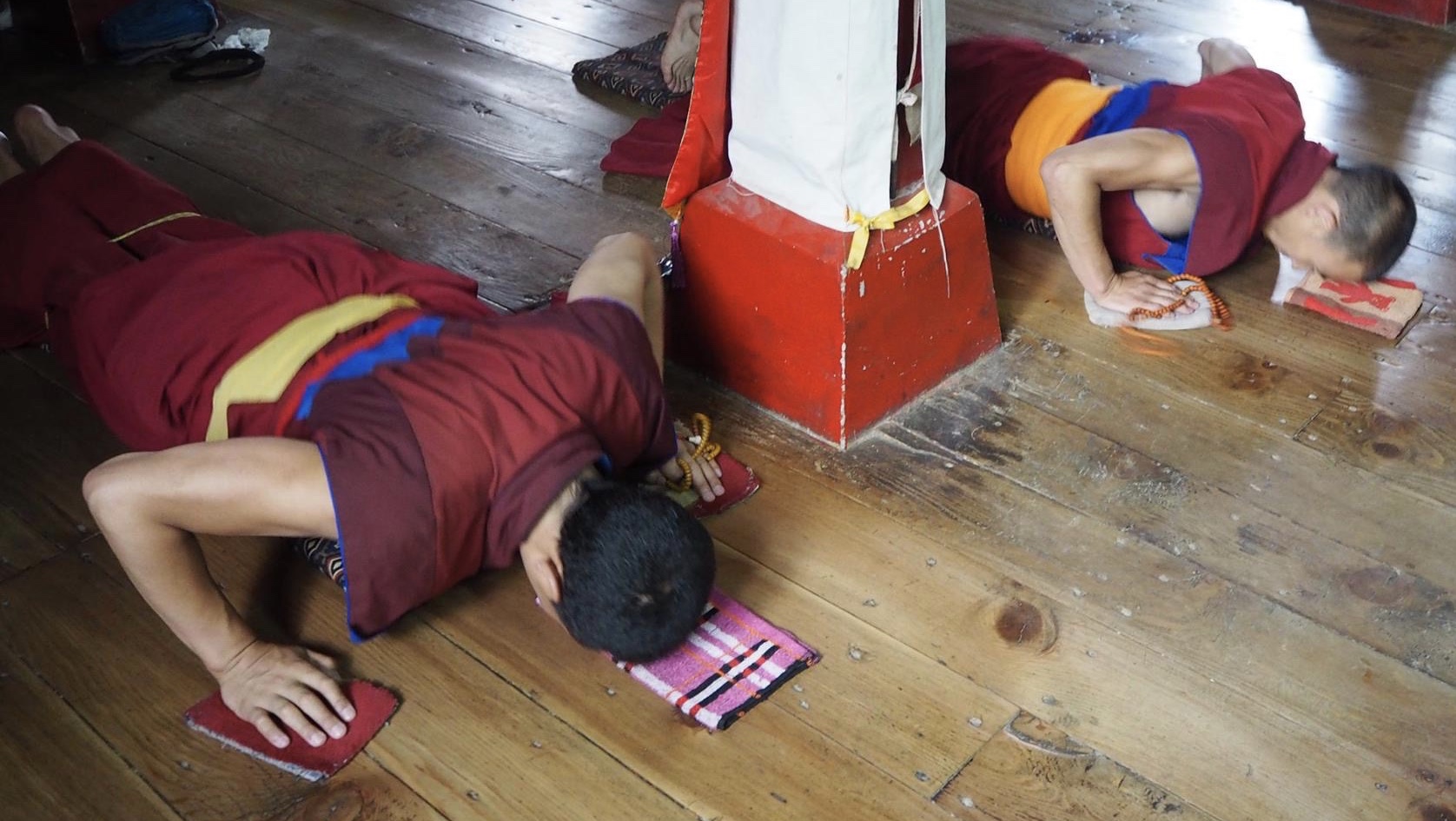
RENEWING THE BODHISATTVA VOWS
The Importance of Retaking the Bodhisattva Vows
Another advice that I have given for the FPMT tradition is that, unless the Guru Puja has to be done very quickly, the bodhisattva vows must be taken before the Confession of Nonvirtue (LC 38), to allow those who have received the vows in the past to renew and make them pure.
There are eighteen root bodhisattva vows and except for two of them—heresy and giving up the wishing vow—four faults are needed to receive a root bodhisattva downfall. For the two exceptions, a root downfall is received whenever they arise, for example if you give up any sentient being, whether a human or insect.
I once asked Kyabje Zimey Rinpoche a question about “giving up sentient beings.” I received the long life initiation of Lama Tsongkhapa and some explanation on the construction of mandala from Rinpoche, and I also requested a commentary to the Wheel of Sharp Weapons. Originally I had requested my root guru His Holiness Trijang Rinpoche to give this commentary and he accepted to give me a brief one. But Geshe Yeshe Tobden, who was one of Lama Yeshe’s best friends at Buxa, and some other meditators also wanted to come, so I requested His Holiness to give a slightly more elaborate commentary. Somehow that didn’t happen and then Kyabje Trijang Rinpoche passed away. So I requested Kyabje Zimey Rinpoche who was a heart disciple of Kyabje Trijang Rinpoche to give the commentary. He was an extremely learned scholar, pure and good hearted.
The question I asked Rinpoche was: If you are closing a door and in reality there are no insects or other sentient beings in the way, but you think there are and don’t care—your attitude is that it doesn’t matter—does that cause a root downfall and break the wishing vow? Rinpoche replied, “Yes.” I’m just telling you this story. Of course you can analyze for yourself whether it is actually breaking a bodhisattva vow or not. Rinpoche said it was.
Anyway, except for the two vows mentioned previously, the remaining vows all need four mistakes to be gathered for a root downfall to occur: (1) not seeing the fault of the action; (2) not giving up the wish to do it again; (3) rejoicing and taking pleasure in it; and (4) not having any shame or consideration. If some of these mistakes are present but not others, it is not a root downfall. The more there are, the heavier the vice becomes; the less there are, the lighter it is.
Of course, a root fall is incredibly heavy negative karma. There are 46 vices, or secondary vows, and breaking one of these is said to be 100,000 times heavier than breaking a Pratimoksha vow. So can you imagine how much heavier it is to break a root vow? Then breaking one of the tantric vices, such as not performing the left-side conduct of mother tantra and so forth, is 100,000 times heavier than breaking a root bodhisattva vow. So breaking a tantric vow is much heavier than that.
Therefore, if some—or any—of the vows have been broken, retaking the bodhisattva vows stops the four mistakes from being gathered. Changing your mind and again deciding to keep the vows purely protects you from a root fall. And that means you save yourself from destruction: from creating obstacles to enlightenment and realizations, and from creating the cause for the lower realms and the sufferings of the human realms after that.
When you lead people in renewing the bodhisattva vows, it benefits all those who have taken them before. Everyone is protected from receiving a root downfall with all its consequences.
“When you lead people in renewing the bodhisattva vows, it benefits all those who have taken them before. Everyone is protected from receiving a root downfall with all its consequences.”
How to Take the Bodhisattva Vows
Usually when you lead the Guru Puja in public, there are always some people who have taken the bodhisattva vows in the past and others who have not. It’s the same with the tantric vows. Therefore, at the beginning, you should always announce that renewing the bodhisattva and tantric vows is only for those who have already received them
Now, for those who have taken the bodhisattva vows in the past, we are going to renew the vows.
Do the same before taking the tantric vows. Make it clear to those who haven’t taken the vows before, and especially those who have no intention of taking them, that they don’t have to repeat the prayer. It’s important to say this when doing the puja in public because it makes things more comfortable for new people. It gives them more freedom. You could also suggest that instead of following the prayer they think
I’m going to develop more compassion for sentient beings from now on and lead a better human life.
After that, you can read aloud the motivation for taking the bodhisattva vows
The purpose of my life is not just to attain happiness for myself alone, but to free the numberless sentient beings from the oceans of samsaric suffering and its causes and bring them to full enlightenment. In order to do that, I need to achieve enlightenment, and in order to do that I need to generate bodhichitta. But generating bodhichitta alone is not enough, I also need to take the bodhisattva vows and keep them pure. Therefore, I’m going to retake the bodhisattva vows.
This helps to set the proper attitude and make it beneficial for all sentient beings, rather than just reciting the words of the prayer blah blah blah blah. Having the correct motivation is essential because then taking the vows becomes beneficial for all sentient beings, not only your family and friends.
The normal prayer for taking the bodhisattva wishing and entering vows from the merit field is the one in the book
KÖN CHHOG SUM LA DAG KYAB CHHI
I take refuge in the Three Rare Sublime Ones.
DIG PA THAM CHÄ SO SOR SHAG
I confess all my negative actions individually.
DRO WÄI GE LA JE YI RANG
I rejoice in the virtues of transmigratory beings.
SANG GYÄ JANG CHHUB YI KYI ZUNG
I keep in mind a buddha’s enlightenment.
SANG GYÄ CHHÖ DANG TSHOG CHHOG LA
I take refuge until I am enlightened
JANG CHHUB BAR DU DAG KYAB CHHI
In the Buddha, the Dharma, and the Supreme Assembly.
RANG ZHÄN DÖN NI RAB DRUB CHHIR
In order to fulfill the aims of myself and others
JANG CHHUB SEM NI KYE PAR GYI
I will generate bodhichitta.
JANG CHHUB CHHOG GI SEM NI KYE GYI NÄ
Having generated supreme bodhichitta,
SEM CHÄN THAM CHÄ DAG GI DRÖN DU NYER
I will invite all sentient beings to be my guests.
JANG CHHUB CHÖ CHHOG YI ONG CHÄ PAR GYI
I will undertake the pleasing, supreme conduct of enlightenment.
DRO LA PHÄN CHHIR SANG GYÄ DRUB PAR SHOG
May I become a Buddha to benefit transmigratory beings. (3x)
If you don’t have time, you can simply recite the first four lines three times. This is the short way of doing the prayer
KÖN CHHOG SUM LA DAG KYAB CHHI
I take refuge in the Three Rare Sublime Ones.
DIG PA THAM CHÄ SO SOR SHAG
I confess all my negative actions individually.
DRO WÄI GE LA JE YI RANG
I rejoice in the virtues of transmigratory beings.
SANG GYÄ JANG CHHUB YI KYI ZUNG
I keep in mind a buddha’s enlightenment. (3x)
I take refuge in the Three Rare Sublime Ones is going for refuge; I confess all my negative actions individually is confessing; and I rejoice in the virtues of transmigratory beings is rejoicing.
If you are doing three repetitions of the prayer, it is good to do it once in Tibetan and twice in English, or at least once in English. When there are more Tibetans in the audience it is different. But if there are more Westerners, you don’t have to do all three repetitions in Tibetan, doing it in both Tibetan and English sounds better. When you are short on time, you can just do the English.
At the conclusion of the final repetition, it is important to think
I have received pure bodhisattva vows. Whatever was degenerated is now restored. Whatever was not degenerated is strengthened.
And rejoice.

“Even if I have to suffer in the hell realms for eons equaling the number of drops of water in the ocean or atoms of this earth to achieve enlightenment for sentient beings—I can do that!”
RENEWING THE TANTRIC VOWS
Next is retaking the tantric vows to make them pure. Again, at the beginning explain to everyone
Now, for those who have taken the tantric vows in the past, we are going to take the tantric vows.
Then lead the motivation
The purpose of my life is to benefit sentient beings. The highest benefit is to liberate them from the oceans of samsaric sufferings and bring them to enlightenment. There’s no choice: I must do this! Therefore, I need to achieve full enlightenment.
For myself, even I have to suffer in the hell realms for eons equaling the number of drops of water in the ocean, or atoms of this earth, to achieve enlightenment for sentient beings, I can do it. But from the side of the sentient beings, I can’t bear to think of them having to wait that long and suffer for unimaginable eons!
Think about the kindness of sentient beings, to feel how very precious they are in your heart
I have received all my past happiness from beginningless rebirth from each sentient being and I will receive all my present and future happiness including liberation and enlightenment from every single one of them.
It is so unbearable to think of these sentient beings suffering in samsara for even an hour, or a minute, or a second longer—it is like suffering for many eons. I must liberate the sentient beings from the oceans of samsaric suffering as quickly as possible and bring them to enlightenment. Therefore, I must achieve enlightenment as quickly as possible. Since this can only happen by taking and living in the tantric vows, I am going to take the tantric vows for the benefit of all my kind mother sentient beings.
The Importance of Renewing the Vows
There are fourteen root tantric vows and only one of them—giving up the wishing vow—doesn’t require all four mistakes mentioned previously in the bodhisattva vows in order to receive a root downfall. So again, when you retake the vows this will stop the four mistakes that bring a root fall. Otherwise, if you break a tantric vow, you create the negative karma to be born for as many eons as seconds pass since receiving the root fall not just in the hot hells, but in the eighth hot hell of Unbearable Suffering, which has the heaviest suffering for the longest amount of time of one intermediate eon. This is explained in the Quick Path and Red Hat commentaries on the stages of the path to enlightenment. It may also be in Liberation in the Palm of Your Hand.
Now you can see how important it is to retake the tantric vows. Generating the thought to take the vows again changes the mind and stops the four mistakes that bring a root fall. Can you imagine what incredible protection this is? Besides the fact that committing a root fall delays any realizations and so on, there is all the suffering that has to be experienced with each second that passes after receiving the root fall—all those many eons in the Unbearable Suffering hell. Retaking the vow protects us from this. There are many people nowadays who have taken a highest tantra initiation and this helps them.
Taking the Vows
There is a long and also short version of the prayer to take the vows. You can mostly recite the short version. The long version is
SANG GYÄ JANG CHHUB SEM PA KÜN / DAG LA GONG PAR DZÄ DU SÖL
All buddhas and bodhisattvas, please listen to me. DAG [say your tantric name]
ZHE GYI WA NI / DÜ DI NÄ NI ZUNG NÄ NI
I, [say your tantric name], from now until I reach the essence of enlightenment,
JANG CHHUB NYING POR CHHI KYI BAR / JI TAR DÜ SUM GÖN PO NAM
Will generate the holy, peerless bodhichitta,
JANG CHHUB TU NI NGE DZÄ PÄI / JANG CHHUB SEM NI LA NA ME
Just as all buddhas of the three times have ensured themselves of enlightenment
DAM PA DAG GI KYE PAR GYI
By generating it.
TSHÜL THRIM KYI NI LAB PA DANG / GE WÄI CHHÖ NI DÜ PA DANG
I will uphold the vows arising from the yogas of the Buddha type;
SEM CHÄN DÖN JE TSHÜL THRIM SUM / SO SOR TÄN POR DAG GI ZUNG
I will individually and firmly observe the three moralities of training in morality,
SANG GYÄ CHHÖ DANG GE DÜN TE / LA NA ME PÄI KÖN CHHOG SUM
Gathering virtuous qualities, and enacting the purpose of sentient beings,
SANG GYÄ NÄL JOR LÄ KYE PÄI /DOM PA DENG NÄ DAG GI ZUNG
And I will rely on the peerless Three Rare Sublime Ones–Buddha, Dharma, and Sangha.
DOR JE RIG CHHOG CHHEN PO YI / DOR JE DRIL BU CHHAG GYA YANG
I will correctly uphold the vajra, bell, and mudra of the great supreme Vajra type,
YANG DAG NYI DU ZUNG WAR GYI / LOB PÖN DAG KYANG ZUNG WAR GYI
As well as honor my teachers.
RIN CHHEN RIG CHHOG CHHEN PO YI / DAM TSHIG YI DU ONG WA LA
For the delightful commitments of the great, supreme Ratna type,
NYIN RE ZHIN NI DÜ DRUG TU /JIN PA NAM ZHI TAG TU JIN
I will practice the four types of generosity every day at the six times.
JANG CHHUB CHHEN PO LÄ JUNG WÄI / PÄ MÄI RIG CHHEN DAG PA LA
For the pure, great Padma type, which arose from great enlightenment,
CHHI DANG SANG WA THEG PA SUM / DAM CHHÖ SO SOR ZUNG WAR GYI
I will uphold the holy Dharma of the outer, secret, and three vehicles.
LÄ KYI RIG CHHOG CHHEN PO LA / DOM PA THAM CHÄ DÄN PAR NI
For the great, supreme Karma type, I will correctly and individually uphold all these vows
YANG DAG NYI DU SO SOR ZUNG /CHHÖ PÄI LÄ NI CHI NÜ GYI
And make as many offerings as possible.
JANG CHHUB SEM NI LA NA ME /DAM PA DAG GI KYE PAR GYI
I will generate the holy, peerless bodhichitta.
SEM CHÄN KÜN GYI DÖN GYI CHHIR / DAG GI DOM PA MA LÜ ZUNG
I will uphold all my vows without exception for the welfare of all sentient beings.
MA DRÄL WA NAM DAG GI DRÄL /MA DRÖL WA NAM DAG GI DRÖL
I will deliver those not delivered, liberate those not liberated,
UG MA CHHIN PA UG YUNG ZHING / SEM CHÄN NYA NGÄN DÄ LA GÖ
Give breath to those unable to breathe, and place all beings in the state beyond sorrow.
You can recite the long version once and then the last two lines twice
MA DRÄL WA NAM DAG GI DRÄL /MA DRÖL WA NAM DAG GI DRÖL
I will deliver those not delivered, liberate those not liberated,
UG MA CHHIN PA UG YUNG ZHING / SEM CHÄN NYA NGÄN DÄ LA GÖ
Give breath to those unable to breathe, and place all beings in the state beyond sorrow.
There is a place where you have to say your tantric name. If you remember your secret name you can say that; otherwise you can say Mikyo Dorje or Askhobhyavajra.
When you finish the recitations for taking the vows, you must generate the strong thought
I have received the tantric vows. Whatever was degenerated is restored. Whatever was not degenerated has increased.
That will definitely help you to not receive the four mistakes and a complete root downfall. But as to actually receiving the tantric vows, it is mentioned that you need to first receive the vajra master initiation in order to receive the vows. So even though you promise to take the tantric vows at the beginning of an initiation, it seems the actual vows are only received during the four initiations. Prior to receiving the vase initiation there is the vajra master initiation, particularly the Guru Vajradhara initiation. And only after you have taken that—by meditating on yourself as Vajradhara father and mother and generating the highest tantra experience of the transcendental wisdom of non-dual bliss and voidness—do you receive the vows.
This is how it is normally explained. But confessing what has been degenerated and promising to observe the vows again helps to stop the four mistakes and prevent a root fall. So it is incredible protection.
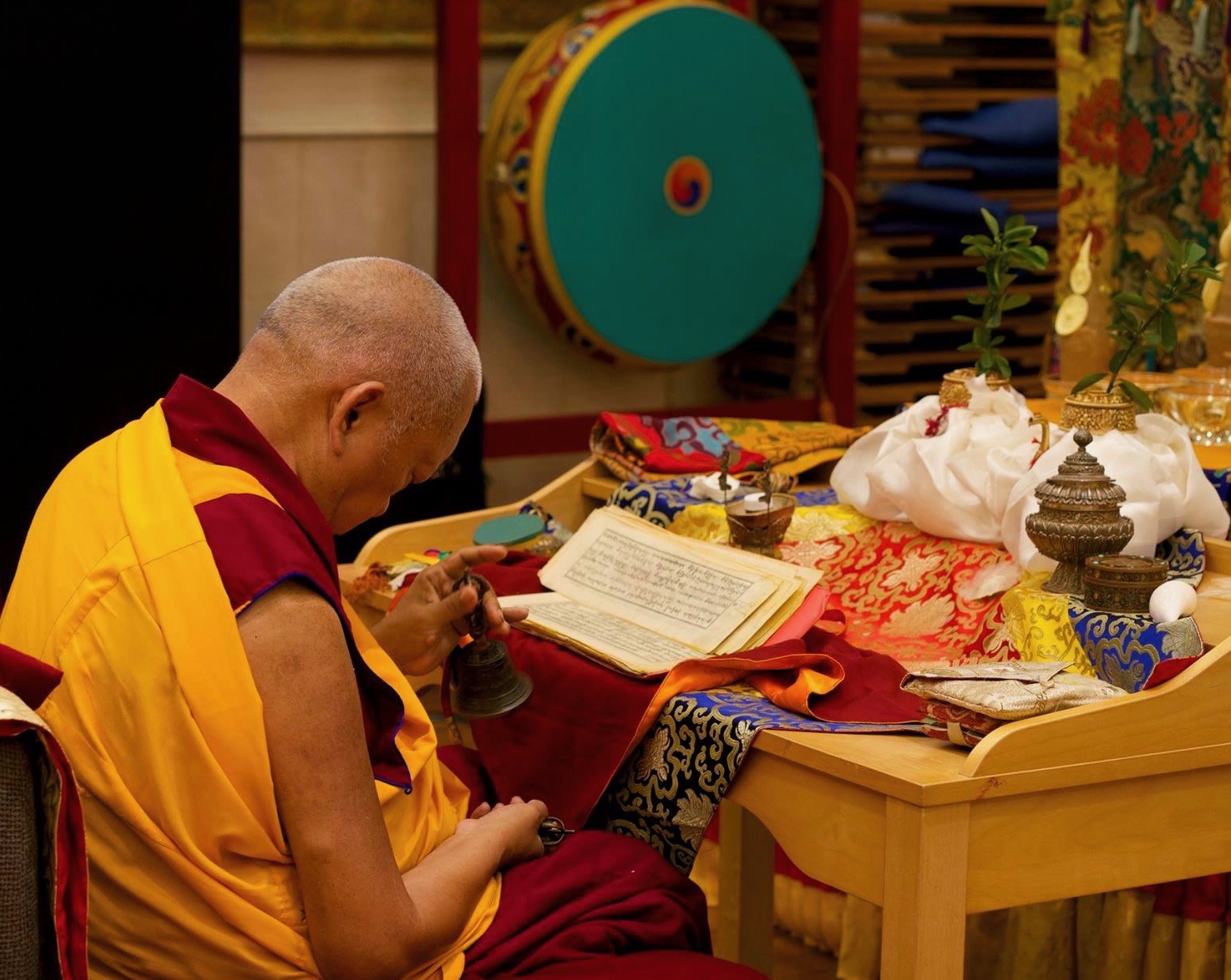
PURIFICATION PRACTICES
It was the practice of the recent lineage lamas of the lamrim tradition to alternate the purification practices of Vajrasattva one day and Samayavajra the next. But if you want, you can do Samayavajra every time, to purify the specific negative karma and broken samaya collected with the guru.
Whichever practice you choose, it must be done with the remedy of the four powers complete: (1) the power of dependence—refuge and bodhicitta; (2) the power of regret; (3) the power of the remedy; and (4) the power of restraint—refraining from creating negativity again. Then it becomes powerful purification.
If you do the purification with Samayavajra, you can either visualize the deity on your crown—as it is done in the Sakya tradition—or in your heart—which is according to Lama Tsongkhapa. Choose whichever you find comfortable. There are three visualizations while reciting the mantra: purifying down (yän de), purifying up (män de) and sudden purification (pung de). With the sudden purification, you can think powerful sunlight emitted into your heart suddenly eliminates all the defilements collected since beginningless rebirths. It is like turning on a light in a dark room: when you turn on the light, the darkness becomes non-existent right there. Similarly, when this sunlight enters your heart, all the defilements collected since beginningless rebirths become non-existent right there. Alternatively, you can think of a strong, powerful flow of nectar that instantly washes away all the negative karma piled up like heaps of garbage. If you are doing the purification with Vajrasattva, His Holiness Trijang Rinpoche said that you must ring the bell while reciting the final mantra to remind yourself of the emptiness of the three circles, subject, object and action.
At the end, when you apply the power of restraint, the lamrim lineage lamas’ advice was to make a realistic commitment for the amount of time you can restrain from the action. This is to avoid the promise becoming a complete lie.
From now on, will abstain from those vices that I can abstain from. Those vices that are extremely difficult, I will abstain from for one day, one hour, one minute, or even a few seconds.
Then, if you have received a highest tantric initiation, you can think the deity absorbs to your heart, blessing your body, speech and mind. And to make the purification more powerful, seal the three circles with emptiness
In emptiness there’s no I, the creator of negative karma; there is no action of creating negative karma; there’s no object negative karma collected.
Finally, you can dedicate like this
Due to all the past, present and future merits collected by myself and by the numberless sentient beings and buddhas,
May I achieve the state of Guru Samayavajra (Vajrasattva)
And lead all the sentient beings to that enlightenment by myself alone.
CONFESSION OF NON-VIRTUE
(LC 38)
The Elaborate Chanting for the Confession of Non-Virtue
(LC 38)
There’s not much to say about the chanting for the Confession of Nonvirtue (LC 38) thog me dü nä. You have been doing this very well. According to His Holiness Song Rinpoche it’s more or less like this—but of course there is no way I can chant exactly like His Holiness.
LC 38
THOG ME DÜ NÄ MI GE DIG PÄI LÄ
Whatever non-virtuous negative actions I have done since beginningless time,
GYI DANG GYI TSÄL YI RANG CHI CHHI PA
Caused others to do, or in which I have rejoiced,
THUG JE CHHE DÄN CHÄN NGAR GYÖ SEM KYI
Before those having great compassion,
SHAG SHING LÄN CHHÄ MI GYI DOM PA NÖ
I confess with regret and vow never to commit them again.
The Medium Chanting for the Confession of Nonvirtue
(LC 38)
The Short Chanting for the Confession of Nonvirtue
(LC 38)
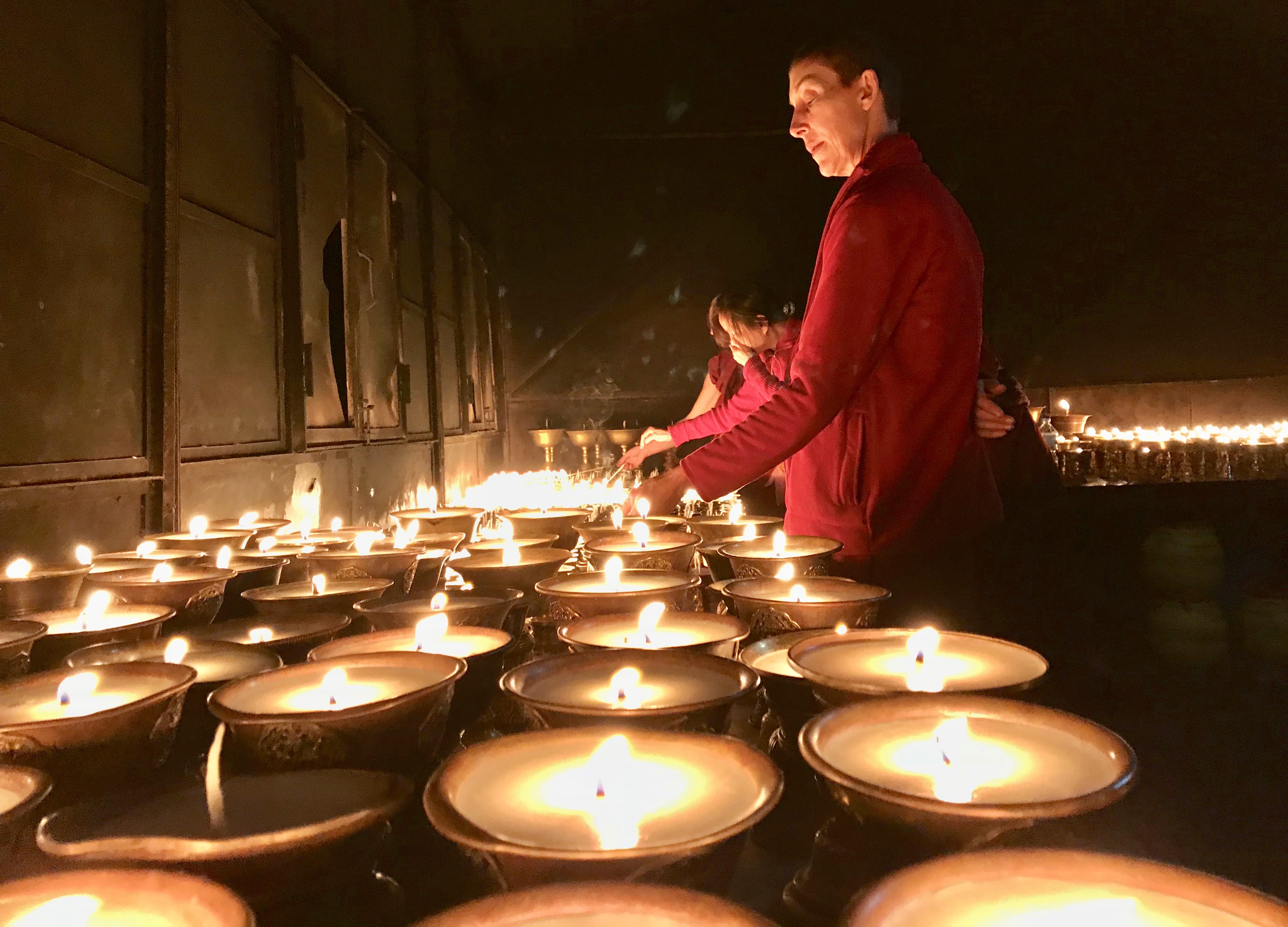
The Fourth Limb: Rejoicing in Virtue
(LC 39)
THE IMPORTANCE OF REJOICING
Stop a little after the verse for Rejoicing in Virtue (LC 39), to remind yourself and everybody else to meditate on rejoicing. I’ve mentioned many times that this is the FPMT tradition.
LC 39
CHHÖ NAM RANG ZHIN TSHÄN MA DANG DRÄL YANG
Though all phenomena lack the characteristic of inherent existence,
MI LAM JI ZHIN KYE PHAG THAM CHÄ KYI
We rejoice from the depth of our hearts in the dreamlike bliss and joy
DE GA CHIR YANG CHHAR WÄI NAM KAR LA
Of all superior and ordinary beings
DAG CHAG SAM PA THAG PÄ YI RANG NGO
And in every virtue that has ever arisen.
Usually the prayer is recited so fast that there is no opportunity to practice. But rejoicing is the easiest way to collect the most extensive merit. That’s why I started the tradition of stopping and meditating at rejoicing whenever we do the seven-limb practice. Whether it’s the Guru Puja, Four Mandala Offerings to Cittamani Tara, Nyung nä, Medicine Buddha puja and so on, you must always stop and rejoice in order not to miss out on this incredible opportunity. There is no business in the world as profitable as this.
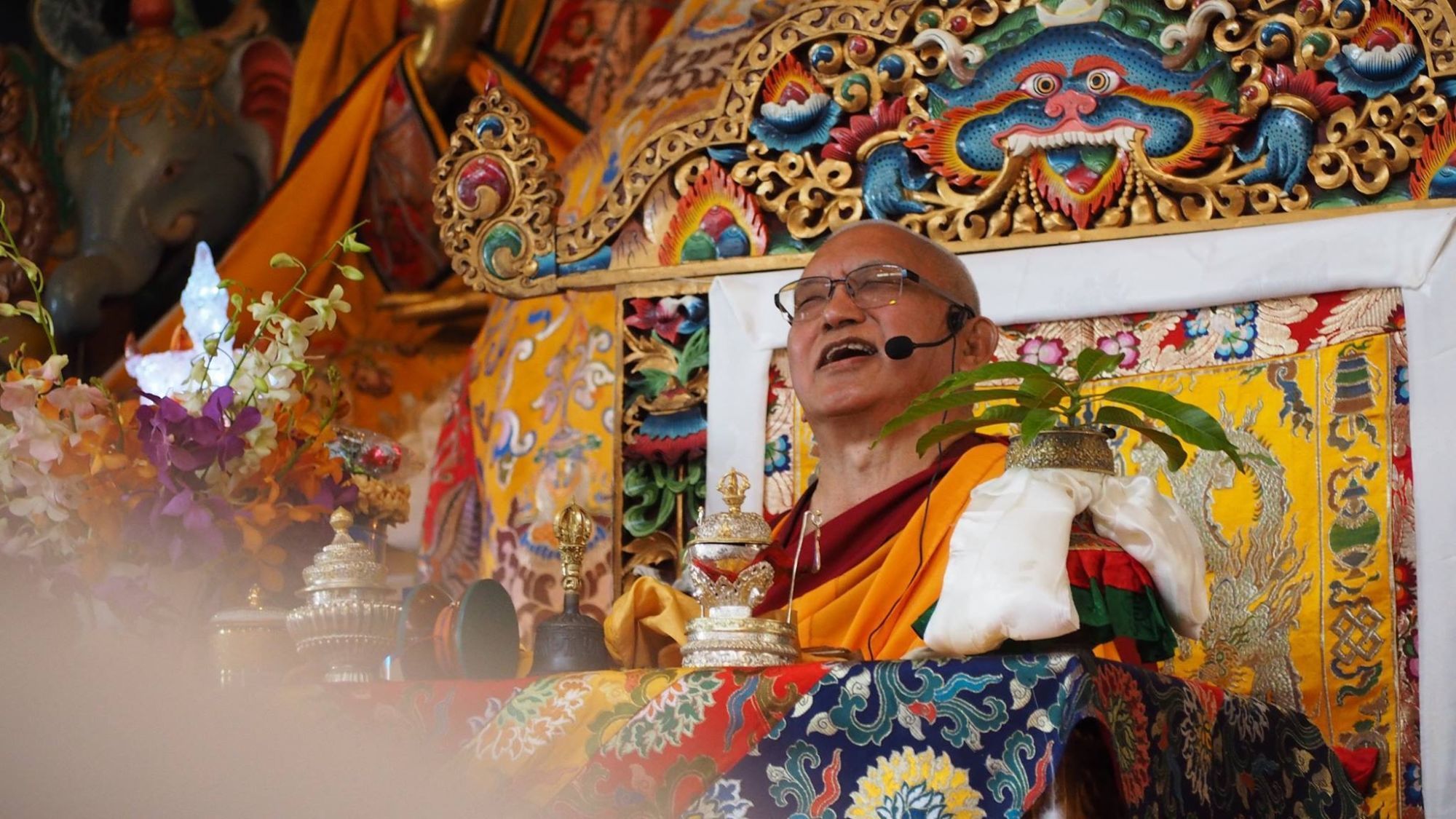
“Rejoicing is the easiest way to collect the most extensive merit. That’s why I started the tradition of stopping and meditating at rejoicing whenever we do the seven-limb practice.”
WHY IS REJOICING SO IMPORTANT?
- Rejoicing is the quickest way to collect extensive merit with little effort. It is the best cause of success and a simple way to make our lives happy.
- Rejoicing can be done anytime and anywhere. It requires no special physical effort or equipment and costs absolutely nothing.
- Rejoicing in the good qualities and success of others creates the cause for ourselves to achieve the same qualities and success.
- Rejoicing is a very pure practice. It is a genuine feeling of happiness and joy in the heart, appreciating our own qualities and those of others, which brings us closer to others.
- Rejoicing is the antidote to jealousy, which does the opposite of the above.
What to Rejoice In
Usually in the Four Mandala Offerings to Cittamani Tara, or the Medicine Buddha puja, the practice of rejoicing is divided into four: the first seven-limb practice is rejoicing in your own merits; the second, rejoicing in sentient beings’ merits; the third, rejoicing in all the bodhisattvas’ merits; and the fourth, rejoicing in all the buddhas’ merits. The Four Mandala Offerings has four seven-limb practices and the rejoicing is divided between them. The Medicine Buddha puja has more than four seven-limb practices so the four different ways of rejoicing are repeated.
In the Guru Puja, rejoicing in sentient beings’ merits and rejoicing in all the bodhisattvas’ merits are done together. So there are three things to rejoice in: (1) your own merits; (2) sentient beings’ merits; and (3) all the buddhas’ merits.
REJOICING IN YOUR OWN MERITS
Start by rejoicing in your own three-time merits. Each time you rejoice in your own merits collected from beginningless rebirths every single virtue is doubled. This happens the minute you think, “How wonderful it is that I have collected all this merit.”
So first think about how precious the merit is
There is nothing I can do without merit. It’s impossible to achieve any success or happiness. No matter how smart I may be, or how well educated, nothing works. Leave aside enlightenment—I can’t even experience small, temporary happiness. Therefore merit is so precious!
Then rejoice
I have been collecting precious merit since beginningless rebirths. How wonderful it is! How happy I am!
You can repeat, “How wonderful!” or “How happy I am!” over and over again. The main thing here is not the words but actually feeling happy. If you feel happy, it’s rejoicing. If you don’t feel any happiness, it’s not rejoicing. Merely reciting the words is not meditating on rejoicing. You must actually generate a feeling happiness by thinking over all the good karma and virtue you have collected since beginningless rebirths. Then focus on how precious every single virtue is, while repeating
How happy I am! How happy I am! How happy I am!
Or
How wonderful! How wonderful! How wonderful!
Do this for one mala, half a mala, twenty-one times, fifteen times, ten times, seven times or whatever. This is an extremely important practice for our lives; it is the easiest way to collect extensive merits.
“If you feel happy, it’s rejoicing. If you don’t feel any happiness, it’s not rejoicing. Merely reciting the words is not meditating on rejoicing.”
Generally, when you have more merit everything goes more smoothly in your life: you have fewer difficulties, less problems and more success. That’s just talking about this life, without talking about achieving realizations and so on. Everything is much more successful. Whatever you think, it just happens. When you have a lot of merit, even those things that would be impossible for normal people, can happen to you. It’s very surprising. There are many stories of things happening to people with a lot of merit that would normally be very difficult. It is all due to merit. The whole answer is merit.
Now here, we are not just looking for success in this life but—more importantly—happiness and success in all our numberless future lives, the ultimate happiness of liberation from samsara, and the great liberation of full enlightenment. Once we have achieved enlightenment, we will have all the qualities needed to liberate numberless sentient beings from the oceans of samsaric suffering and bring them to full enlightenment. That’s the most unimaginable happiness! Achieving this is a question of merit, completing the collection of merit. Therefore, there is no question how important it is to have merit—that is the answer to everything.
So rejoice by thinking, “I have collected precious merit since beginningless rebirths up to now. How happy I am!” Or, “How wonderful!” When you do this, the merit doubles. Can you imagine? Then again you think, “How happy I am!” and with the second rejoicing the original merit becomes four times as much. Then you rejoice again and all that merit doubles becoming eight times as much. Wow! Now there is so much merit you will faint—you will pass out and not wake up for years! The fourth time you rejoice the merit again doubles becoming sixteen times the original. And so on. Can you imagine how much the merit will have increased after rejoicing seven times? Twenty-one times? Half a mala? Wow!
“There is no question how important it is to have merit—that is the answer to everything.”
THE MATHEMATICS OF REJOICING
1) Every time we rejoice in our own merit the original quantity doubles. Here are some examples of how the merit increases
- 1st rejoicing: 1+1=2;
- 2nd rejoicing: 2+2=4;
- 3rd rejoicing: 4+4=8;
- 4th rejoicing: 8+8=16;
- 5th rejoicing: 16+16=32;
- 6th rejoicing 32+32=64;
- 7th rejoicing: 64+64=128;
- 21st rejoicing: 1,048,576+1,048,576=2,097,152;
- 54th rejoicing (half mala) = 1.8014398509482e16;
- 108th rejoicing (one mala) = 3.24518553658427e32
2) Every time we rejoice in the merits of other sentient beings
- We get double the merit created by those with a lower level of mind to ours
- We get an equal amount of merit created by those with an equal level of mind to ours
- We get half the merit created by those of a higher level of mind than ours. For example, the merit gained by rejoicing in one bodhisattva’s accumulation of merit in one day would take us 13,000 years to create.
3) Every time we rejoice in the buddhas’ merits (which includes our gurus)
- We gain one tenth of their merit.
And by rejoicing in their enlightened qualities and activities to benefit sentient beings we create the cause sooner or later to gain the same.
Therefore, every time we rejoice in the three times’ merits (past, present and future) of ourselves, numberless sentient beings and numberless buddhas the amount of merit collected is beyond imagination.
REJOICING IN THE MERIT OF OTHER SENTIENT BEINGS

Next, rejoice in the merit of other sentient beings.
When you rejoice in the merit of sentient beings whose level of mind is lower than yours, you gain twice as much merit as they have collected.
When you rejoice in the merit of sentient beings whose level of mind is the same as yours, you gain equal merit.
When you rejoice in the merit of sentient beings whose level of mind is higher than yours, you gain half as much merit as they have collected. Kyabje Pabongka Dechen Nyingpo explained that if you rejoice in the merit that one bodhisattva accumulates in one day, you gain half as much merit—but if you were going to collect that much merit without rejoicing, it would take thirteen thousand years.
There are numberless sentient beings. Rejoice in all the merit they have collected since beginningless rebirths; all the merit they are collecting now; and all the merit they will create in the future up to enlightenment. Here you are also rejoicing in all the past, present and future merits of numberless bodhisattvas; so it’s simply amazing.
REJOICING IN THE BUDDHAS’ MERITS
Lastly, rejoice in all the buddhas’ merits. A buddha has completed the accumulation of merit and when you rejoice in a buddha’s merit, you gain one tenth of that.
There are actually three things to rejoice in for the buddhas: (1) their merits; (2) their realizations; and (3) their extensive benefit to sentient beings. When you rejoice in the qualities and realizations of the numberless buddhas, you create the cause to quickly become like them yourself, having all their enlightened qualities and the ability to offer extensive benefit to sentient beings.
You can start by rejoicing in Guru Shakyamuni Buddha, Manjushri and Maitreya. Then rejoice in all the great enlightened scholar-pandits, such as Nagarjuna, Asanga and so on. Then rejoice in all the great masters of the Kadampa tradition and the new Kadampa tradition. It is particularly important to rejoice in all Lama Tsongkhapa’s merits, qualities and extensive benefit to other sentient beings. Lama Tsongkhapa gave the clearest explanation of the Buddha’s teachings and offered skies of benefit to sentient beings. Similarly rejoice in all the lineage lamas of the graduated path down to your own gurus—for example, His Holiness the Dalai Lama. His Holiness is able to benefit sentient beings in such an extensive way every day. And when he teaches, so many people come to listen. This is something incredible that we can rejoice in. And by doing so, not only do we collect extensive merit, but we also create the cause sooner or later to become like that. So it’s very important to rejoice.
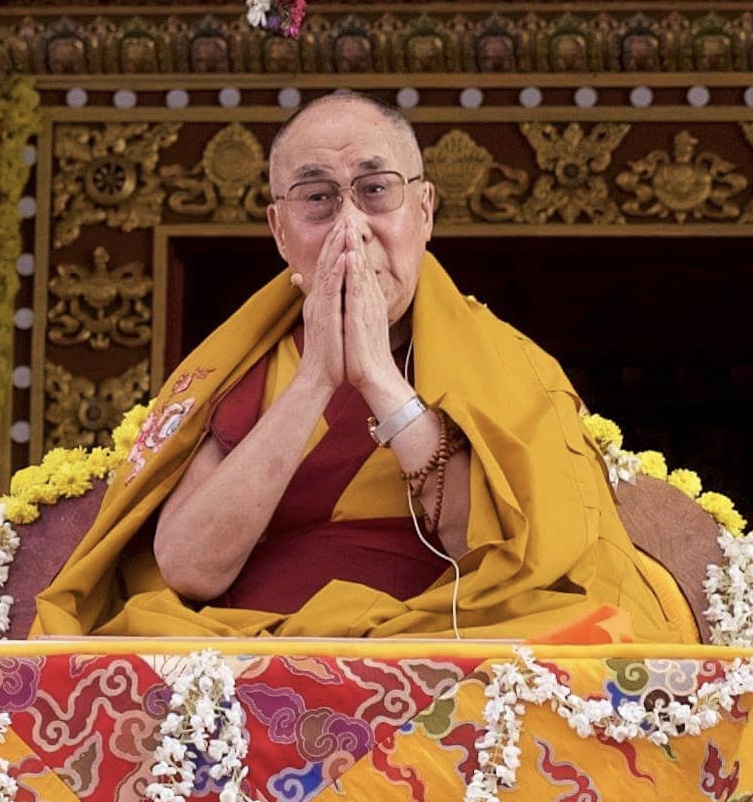
“His Holiness is able to benefit sentient beings in such an extensive way every day—this is something incredible that we can rejoice in.”
There is one story that illustrates this. It tells how Shariputra created the karma to be the Buddha’s heart disciple, accompanying the Buddha for so many years. In one of Shariputra’s past lives, he was travelling and stopped overnight in a temple. While he was fixing he shoes, light shone on a painting of the Buddha in front of him, and when he saw it, he rejoiced at how wonderful the Buddha’s holy body was. This was the cause for him to be born a human being in his next life and to become a monk, an arhat and Guru Shakyamuni Buddha’s heart disciple. Can you imagine? It was all because he saw a drawing of the Buddha and rejoiced.
Therefore, if we also rejoice in the qualities and activities of the enlightened beings, sooner or later we too will become buddhas endowed with every enlightened quality and capable of offering extensive benefit to sentient beings.
CONCLUSION
At the end of the practice of rejoicing, you should think
May I be able to collect as much merit as all the buddhas and sentient beings in order to benefit each and every single sentient being.
Now you can see what an amazing practice it is to rejoice. This is a quick way to achieve enlightenment. When one Indian king asked Nagarjuna for advice saying, “I’m so busy. What can I practice?” Nagarjuna advised the king to do only three things: maintain a bodhicitta motivation; rejoice again and again; and dedicate all the merits to achieve enlightenment for the benefit of all sentient beings. Therefore, if you think your life is also very busy, this is Nagarjuna’s advice to you. At least do these three things. Write them down in your diarrhea book (sorry to say that!) so you remember them. Then look at them again and again to remind yourself what you are supposed to practice. These three of the most important practices for daily life.
There are many other teachings on rejoicing explained in the Golden Light Sutra, but for now this is enough.
“Nagarjuna advised the king to do only three things: maintain a bodhicitta motivation; rejoice again and again; and dedicate all the merits to achieve enlightenment to benefit sentient beings. If your life is also very busy, this is Nagarjuna’s advice to you.”
HOW TO PRACTICE REJOICING IN THE GURU PUJA
1) Rejoice in your own merit
Start by gaining a clear understanding of the importance of merit
- Every single happiness and success that I experience in this life can only arise in dependence upon a cause and that cause must be virtue or merit. Without merit, life is so difficult, nothing good can happen. Leave aside all the spiritual realizations, we cannot even experience moment to moment happiness.
Now rejoice by thinking
- I have created so much merit in the past since beginningless rebirths up to now. I am creating merit now. And I will create so much merit up to enlightenment. How wonderful. How precious! How happy I am.
Generate a feeling of genuine joy and happiness, while repeating this as many times as you wish. Merely repeating the words is not enough: you must actually feel genuine happiness in your heart.
2) Rejoice in the merit of sentient beings
Again reflect that what every sentient being wants is happiness and not suffering. And the cause of all the happiness they seek is virtue. Therefore rejoice in all the three-time virtue accumulated by others. Remember to include all the numberless bodhisattvas’ merit, realizations and benefit to others.
3) Rejoice in all the buddhas’ merit
Now rejoice in the all the merits; enlightened qualities; and enlightened activities of the numberless buddhas. Each buddha has infinite skies of qualities of the holy body, speech and mind. For example, you can rejoice in
- The omniscient holy mind, that simultaneously sees all past, present and future, as well as all phenomena, both relative and ultimate.
- The perfect compassion to all sentient beings without any discriminating thought.
- Perfect power—able to effortlessly manifest countless forms to guide even one sentient being.
You can also rejoice in the individual lineage lamas from Guru Shakyamuni Buddha to your own personal gurus, such as His Holiness the Dalai Lama; and especially in Lama Tsongkhapa.
The Elaborate Chanting for Rejoicing
(LC 39)
LC 39
CHHÖ NAM RANG ZHIN TSHÄN MA DANG DRÄL YANG
Though all phenomena lack the characteristic of inherent existence,
MI LAM JI ZHIN KYE PHAG THAM CHÄ KYI
We rejoice from the depth of our hearts in the dreamlike bliss and joy
DE GA CHIR YANG CHHAR WÄI NAM KAR LA
Of all superior and ordinary beings
DAG CHAG SAM PA THAG PÄ YI RANG NGO
And in every virtue that has ever arisen.
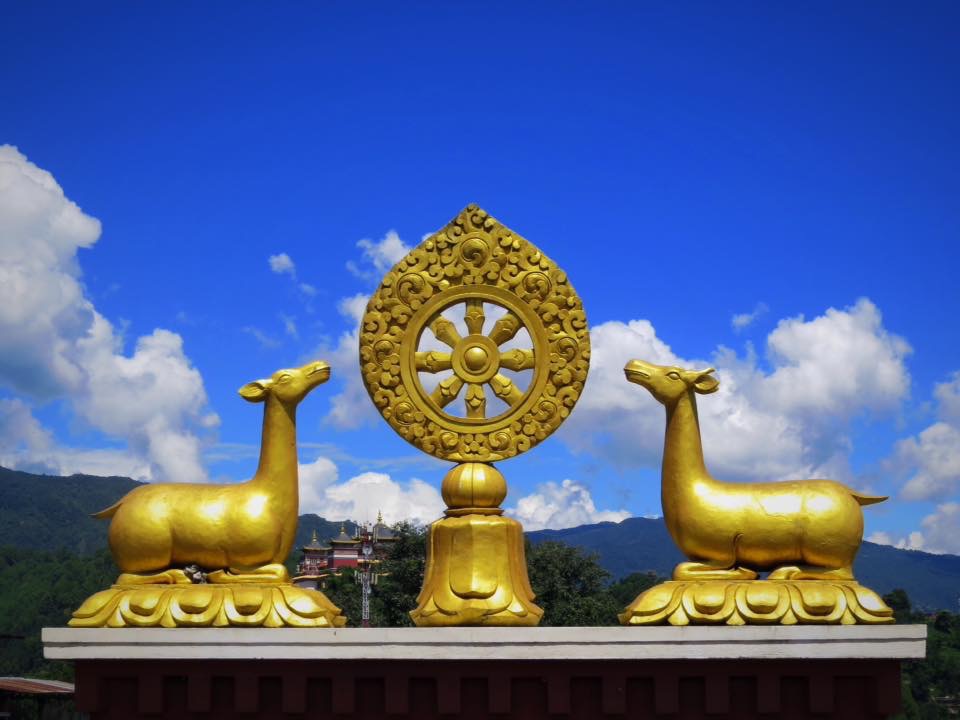
The Fifth to Seventh Limbs: Requesting to Teach, Requesting to Live Long, Dedication of Merit
(LC 40-42)
THE FIFTH LIMB: REQUESTING TO TEACH
(LC 40)
When you recite the Request to the Guru to Turn the Wheel of Dharma (LC 40), you can visualize numberless replicas of yourself in the form of Brahma each offering a large radiating, thousand-spoke, golden Dharma wheel.
LC 40
PHÜL JUNG KHYEN TSE CHHU DZIN BUM TRIG TE
Please let fall a rain of profound and extensive Dharma
THA YÄ DRO DII PHÄN DE KÜN DÄI TSHÄL
From a hundred thousand billowing clouds of perfect wisdom and compassion
KYE DANG YÜN DU NÄ DANG PEL WÄI CHHIR
So that the jasmine garden of the benefit and bliss of infinite transmigratory beings
ZAB GYÄ CHHÖ KYI CHHAR PA WAB TU SÖL
May be born, abide long, and grow.
Usually, if you have a mandala set there is a Dharma wheel on top. You can hold that up and offer it while doing the visualization.
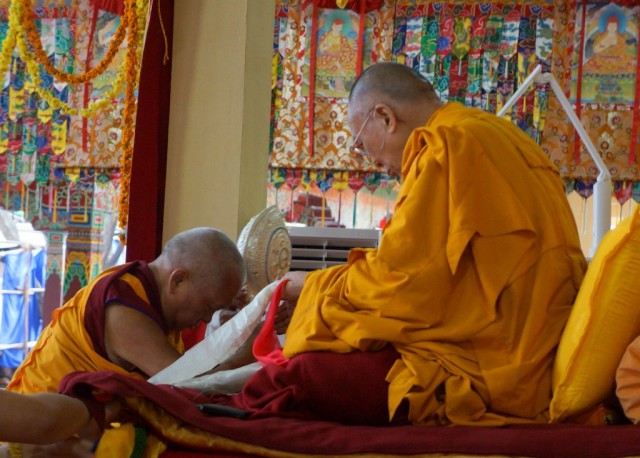
THE SIXTH LIMB: REQUESTING TO LIVE LONG
(LC 41)
When you do the Request to the Guru to Remain for a Long Time (LC 41), you can visualize numberless replicas of yourself offering a beautiful golden throne with a double vajra at the front and supported by eight snow lions, two on each side. Again, you can hold up a drawing of a throne, or even have a small one made and hold it up while you recite the verse. That will make it easier to visualize.
LC 41
DOR JEI KU LA KYE CHHI MI NGA YANG
Your vajra body is subject to neither birth nor death,
ZUNG JUG WANG GI GYÄL PÖI ZA MA TOG
But is a vessel of the mighty king, unification.
DAG CHAG MÖ PA JI ZHIN SI THÄI BAR
Please abide forever according to our wishes,
NYA NGÄN MI DA TAG PAR ZHUG SU SÖL
Not passing beyond sorrow until samsara ends.
Think that the merit field accepts this and particularly those in the nirmanakaya, who show the aspect of passing away into the sorrowless state. There are two ways the buddhas can show the action of accepting: one is the conventional way—where they respond to you saying, “yes, yes.” And the other is the absolute way, which is in the silence. You can also visualize that the throne absorbs into the merit field’s throne; but I don’t remember ever hearing anything about the Dharma wheel absorbing.
It is also mentioned in the text that during the part where you request them to teach the Dharma, you can offer a mandala of five heaps, and when you offer the throne you can offer a mandala of nine heaps. The main thing is to visualize the Dharma wheel and the throne as richly as possible and each of the offerings multiplied numberless times.
THE SEVENTH LIMB: DEDICATION OF MERIT
(LC 42)
Finally, when you do the Dedication of Merit (LC 42), think about the meaning
LC 42
DE TAR TRÜN PÄI NAM KAR GE WÄI TSHOG
I dedicate the merits of white virtue thus created
KA DRIN SUM DÄN JE TSÜN LA MA YI
That we may be inseparably guided in all our lives
TSHE RAB KÜN TU DRÄL ME JE DZIN CHING
By perfect, pure gurus who are kind in the three ways,
ZUNG JUG DOR JE CHHANG WANG THOB CHHIR NGO
And thereby attain the unified state of Vajradhara.
And remember to seal with emptiness
Due to all the three times’ merits collected by me and by the numberless sentient beings and buddhas, which are empty,
May the I, which is empty, achieve Lama Lozang Thubwang Dorje Chang’s enlightenment, which is empty,
And lead all the sentient beings, who are empty, to that enlightenment, which is empty, by myself alone, who is also empty.
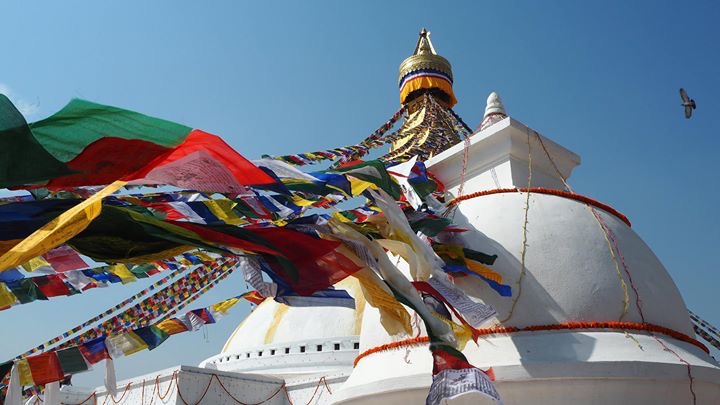
Conclusion
That completes the seven-limb practice.
If you want to elaborate, you can do each practice of the seven limbs seven times, like when you are offering the mandala, or in the Medicine Buddha puja, where the seven-limb practice is repeated many times. Similarly here, you can do prostrations with the visualization seven times; then the offerings seven times; the confession of nonvirtue seven times; rejoicing in virtue as much as you can; requesting to turn the wheel of Dharma seven times; requesting the gurus to remain for a long time seven times; and finally, the dedication of merit seven times.
Each time you do these seven limbs you collect incredible merit. The more you do it, the greater the merit becomes. This is mentioned in the Golden Light Sutra.

Additional Resources for Study

Contains the current version of the Guru Puja practice put together by Lama Zopa Rinpoche for use at retreats and for daily practice, the Lama Chöpa Jorchö, along with other prayers.
More Free Teachings by Rinpoche on Guru Puja
Three teachings on Guru Puja available for free download in pdf form.
A short commentary on Guru Puja given by Kyabje Lama Zopa Rinpoche at Langri Tangpa Centre, Brisbane, Australia, 1991. Edited by Ven. Ailsa Cameron.
The Heart of the Path: Seeing the Guru as Buddha

This book is essential companion reading for anyone wanting to understand and practice the Guru Puja. It contains a wealth of essential teachings by Lama Zopa Rinpoche covering the topic of guru devotion in extensive detail.
Liberation in the Palm of Your Hand

Classic discourses on the lamrim tradition by the great Pabongka Rinpoche, which are essential reading. Excellent for additional information on the preliminary rites of Jorchö and the meditations for guru devotion.
Liberation in Our Hands 3 Vols.
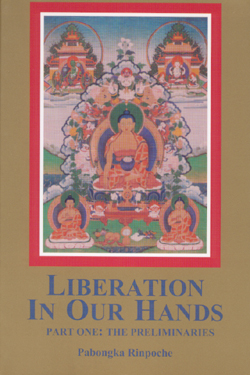
An alternative translation of the above in three volumes.
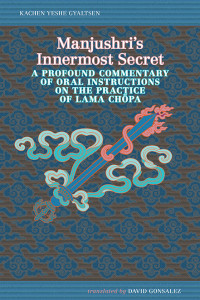
Kachen Yeshe Gyaltsen’s commentary on the First Panchen Lama’s Guru Puja. Many of these teachings were previously held as sealed-in-secret oral instructions that swiftly guide the spiritual practitioner to the state of complete enlightenment through the full spectrum of teachings on the lamrim and mind training (lojong) as well as the generation and completion stages of highest yoga tantra, all of which are centered around, and grounded in, deep heart-felt faith and devotion for one’s spiritual guide.
This text is restricted to those who have received a Highest Yoga Tantra empowerment.
Teachings from the Medicine Buddha Retreat
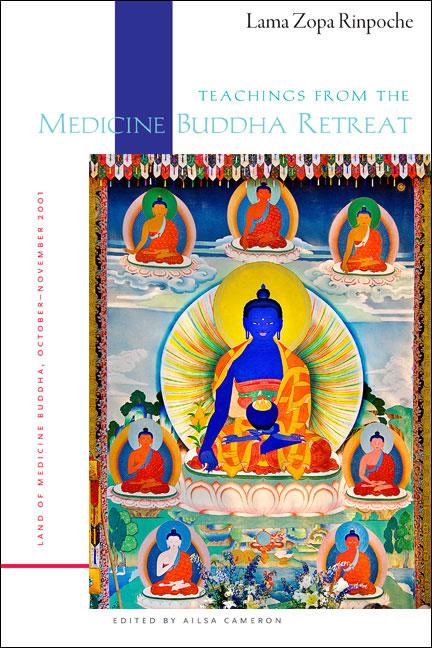
Teachings from a three-week Medicine Buddha retreat led by Lama Zopa Rinpoche in California in 2001, including several sessions on Guru Puja.
Teachings from the Vajrasattva Retreat

Teachings from a three-month Vajrasattva Retreat in California led by Lama Zopa Rinpoche in 1999, with several instructions on the Guru Puja practice.

Teachings on the Guru Puja practice given by His Holiness the Fourteenth Dalai Lama during the FPMT-sponsored Second Dharma Celebration, EEC2. Translated by Thubten Jinpa.
Study Modules
Living in the Path: The Seven-Limb Prayer
The Seven-Limb Prayer is found in, and is the basis of, many practice texts, including The King of Prayers and Lama Chopa. This powerful method was taught by the Buddha as a means to accumulate merit and purify negativities, whereby we create the cause to experience every happiness up to enlightenment. In this module, Lama Zopa Rinpoche teaches the benefits of each limb (Prostration, Offering, Confession, Rejoicing, Requesting to Remain, Requesting to Turn the Wheel of Dharma, and Dedication) and how to practice them in the most effective way.
Miscellaneous Credits
With grateful thanks to all those mentioned below for use of materials in this multimedia series.
Text Credit
The First Limb: Prostrations: “How to Meditate on the Prostration Verses.” Adapted from Lama Zopa Rinpoche, Heart of the Path, pp. 279-282. Edited by Ven Ailsa Cameron.
The Second Limb: Offerings: First paragraph of Outer Offerings: “The Offering Cloud Mantra” and all of “Presenting the Offerings.” Adapted from Lama Zopa Rinpoche, Most Secret Hayagriva Commentary. Edited by Gordon McDougall. Unpublished.
Miscellaneous Photo Credits
Cover photo: Lama Zopa Rinpoche offering a mandala at ABC, Singapore, 2016. (Photo Bill Kane)
Chapter title: The First Limb: Prostrations: Lama Zopa Rinpoche prostrating, ABC, Singapore, 2016. (Photo Bill Kane)
Chapter title: The Second Limb: Offerings: Offering butter lamps at Mandarava, Nepal, 2018. (Photo Peter Ho)
Chapter title: The Third Limb: Confession of Nonvirtue: Monks prostrate at Olka Cholung, Tibet, where Lama Tsongkhapa completed millions of prostrations. (Photo Ven Tenzin Tsultrim)
Chapter title: The Fourth Limb: Rejoicing in Virtue: Offering butter lamps at Maratika, Nepal, 2018. (Photo Peter Ho)
Chapter title: The Fifth to Seventh Limbs: Requesting to Teach, Requesting to Live Long, Dedication of Merit: The Dharma Wheel above the entrance to Kopan Monastery. (Photo Ven Tenzin Tsultrim)
Chapter title: Conclusion: Stupa at Boudha, Nepal, 2017. (Photo Ven Tenzin Tsultrim)
Chapter title: Additional Resources for Study: Cloth-wrapped texts on the altar of Kadampa Center, North Carolina, USA. (Photo Ven Sarah Thresher)
About Guru Puja is the Heart Practice
“All the previous holy beings of our tradition also did this Guru Puja as the heart practice. It has few words but encompasses so much. It has great blessing and the profound vital points.”
Pabongka Dechen Nyingpo quoted by Lama Zopa Rinpoche

Guru Puja is the Heart Practice contains a wealth of teachings and instructions on the Guru Puja, which Rinpoche emphasizes is to be taken as the very heart of our practice, just as it has been for generations of great masters and yogi-practitioners of the past. It also introduces chanting and the lineage of chanting to be used for the Guru Puja within the FPMT.
The multimedia series is based on six sessions taught by Lama Zopa Rinpoche at the first Light of the Path retreat in North Carolina, 2009. These are supplemented by other multimedia material taken from similar teachings given by Rinpoche at retreats around the world, along with links to related materials. Edited by Venerable Sarah Thresher.
Part One: The Importance of Practicing Guru Puja , Part Two: An Introduction to the Chanting Lineage of the Guru Puja, Part Three: The Seven-Limb PracticePart, Four: Making Requests to the Gurus, Part Five: The Tsog Offering (restricted), Part Six: The Lamrim Prayer to the Verses of Auspiciousness.
The Guru Puja is a highest yoga tantra practice.
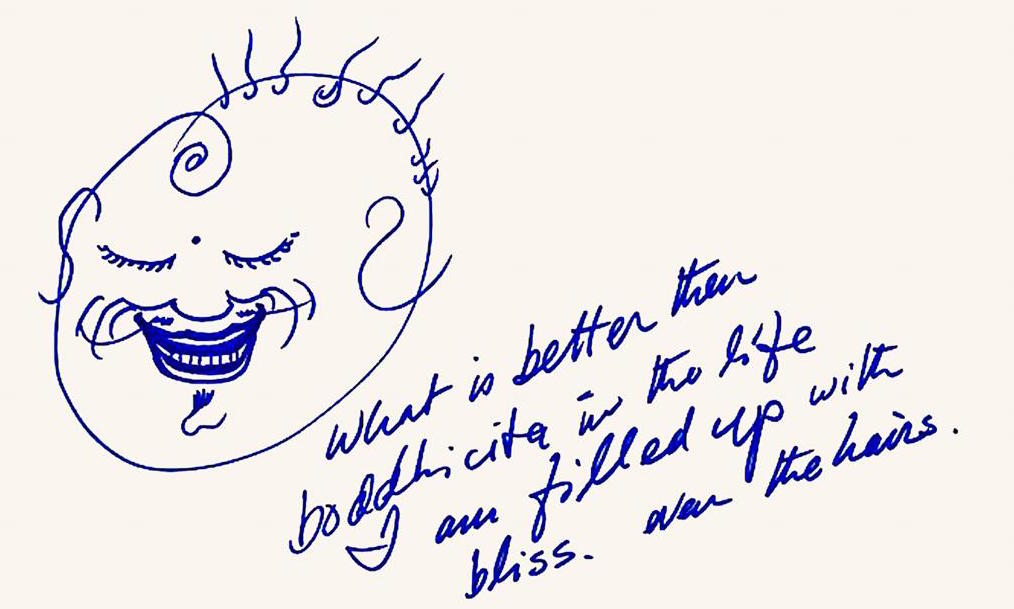
About the Heart Advice Series
The goal of the LYWA Heart Advice Series is to preserve and make available Rinpoche’s unique style and lineage of teachings and practices. Heart Advice is a series of core teachings — the “heart advice” — taken from the experiential instructions of Lama Zopa Rinpoche. You can read more about the goals of the Heart Advice Series here.
The main resources for the Heart Advice titles are Rinpoche’s major retreats, commentaries and transmissions given since 2008, although other Archive materials supplement these.
The first title in this series was Bodhisattva Attitude: How to Dedicate Your Life to Others.
The Heart Advice Series is dedicated to the long life and perfect health of Lama Zopa Rinpoche, to his continuous teaching activity and to the fulfillment of all his holy wishes.
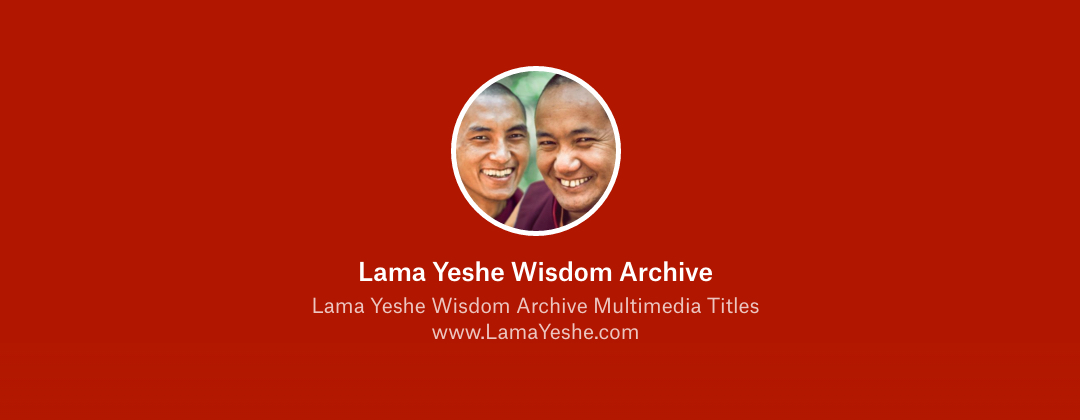
About LYWA Multimedia
LYWA hopes that these multimedia presentations will serve to immerse you in these precious teachings and will enhance your meditation and practice. By weaving Archive resources together in this multidimensional way we intend to offer you the means to deepen your experience of the teachings – almost as if you had attended the teachings in person.
This third chapter in Lama Zopa Rinpoche’s Guru Puja is the Heart Practice, The Seven Limb Practice, joins the first chapter, The Importance of Practicing Guru Puja, and the second chapter, “An Introduction to the Chanting Lineage of the Guru Puja” and adds to our growing collection of multimedia titles including Lama Yeshe’s The Best Answers Come Through Meditation, The Nature of the Mind, and Freedom – Courage – Realization and Lama Zopa Rinpoche’s The Merely Imputed I and the Bodhisattva Attitude multimedia series which includes Everything Depends on Your Attitude, Cutting the Concept of Permanence, Give Up Stretching the Legs, Four Wrong Concepts and The Bodhisattva Attitude. Explore the complete collection of LYWA multimedia titles here.
We welcome your questions, comments and suggestions!
Lama Yeshe Wisdom Archive

These multimedia titles are made possible by the kind supporters of the Lama Yeshe Wisdom Archive who, like you, appreciate how the Archive makes the teachings of Lama Yeshe and Lama Zopa Rinpoche freely available in myriad formats on the LYWA website for researching, listening, reading, downloading and ordering, shared daily with our social media communities and distributed worldwide as audio books, ebooks and many free books.
Please join us in sharing the Dharma with everyone everywhere for the happiness and benefit of all beings. Learn how by visiting us at LamaYeshe.com.
Thank you so much!
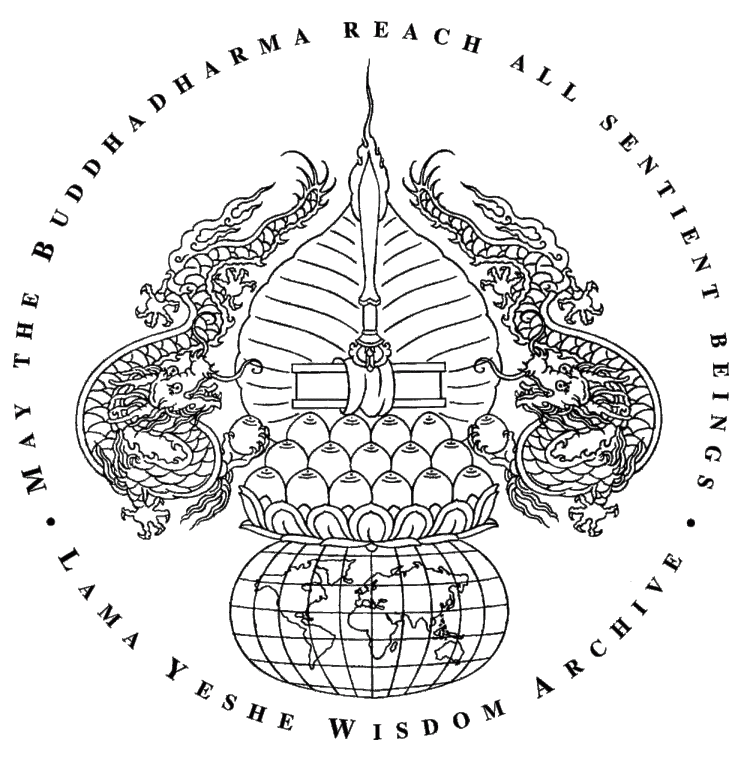
Sign up for the free monthly LYWA Dharma eletter!

